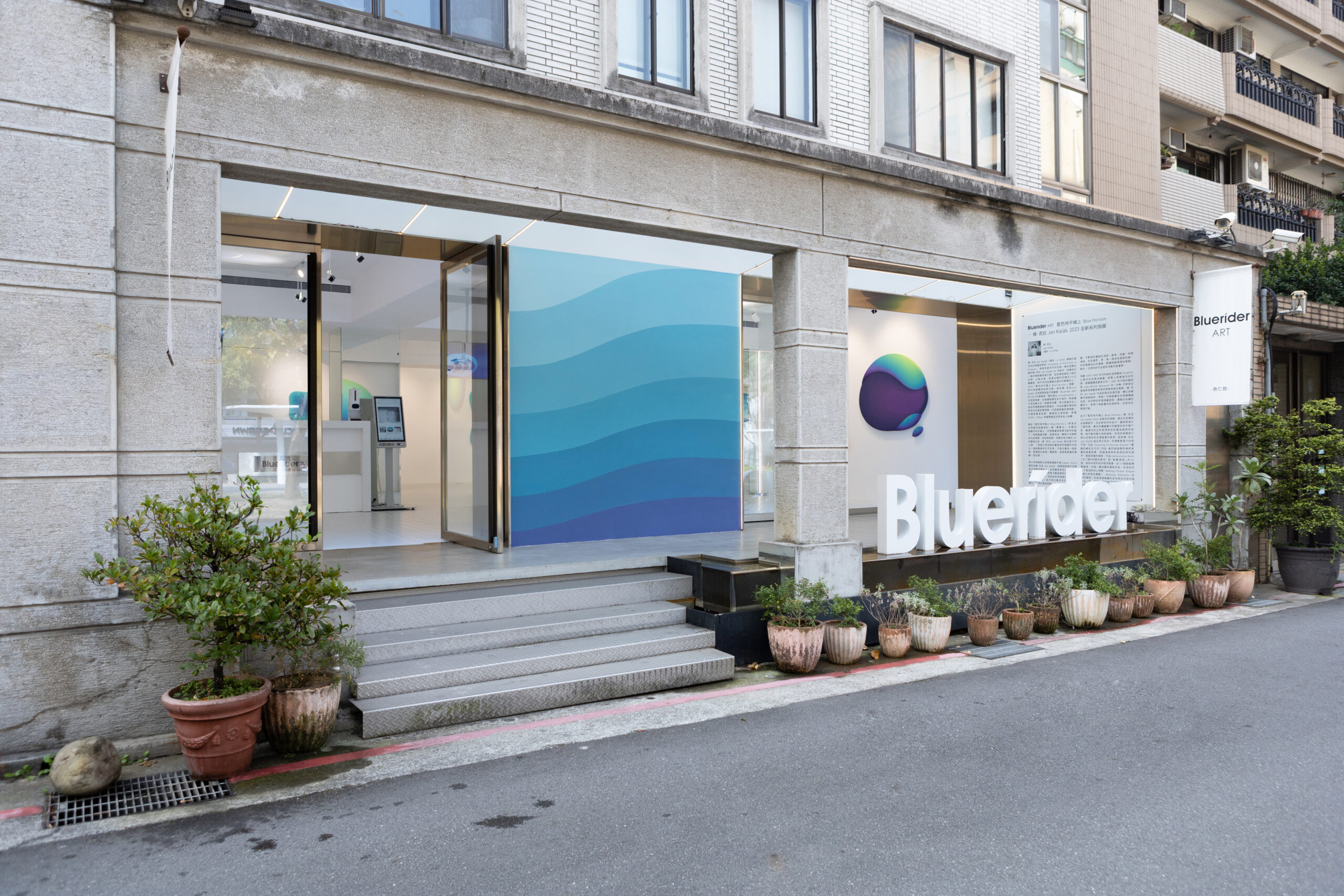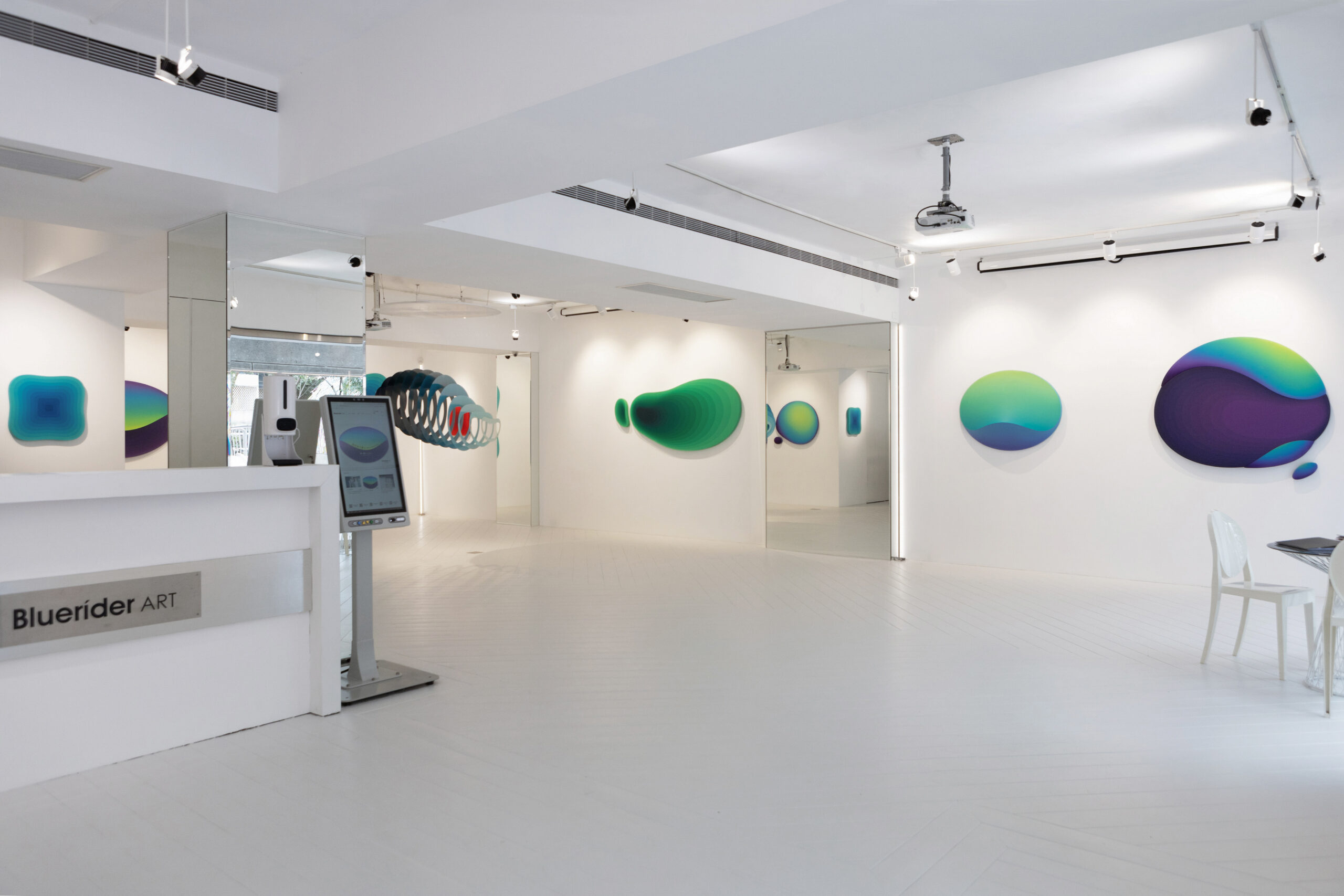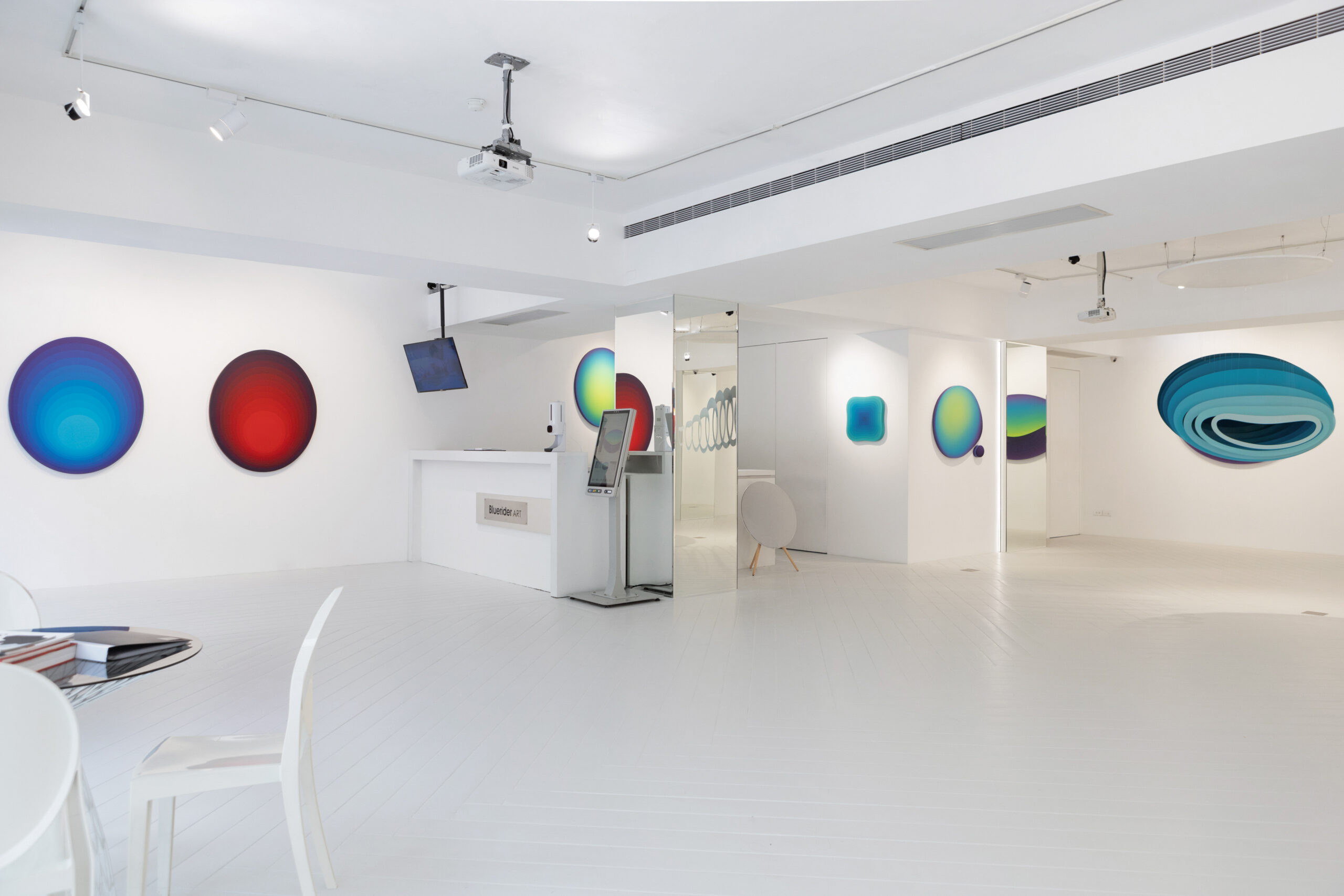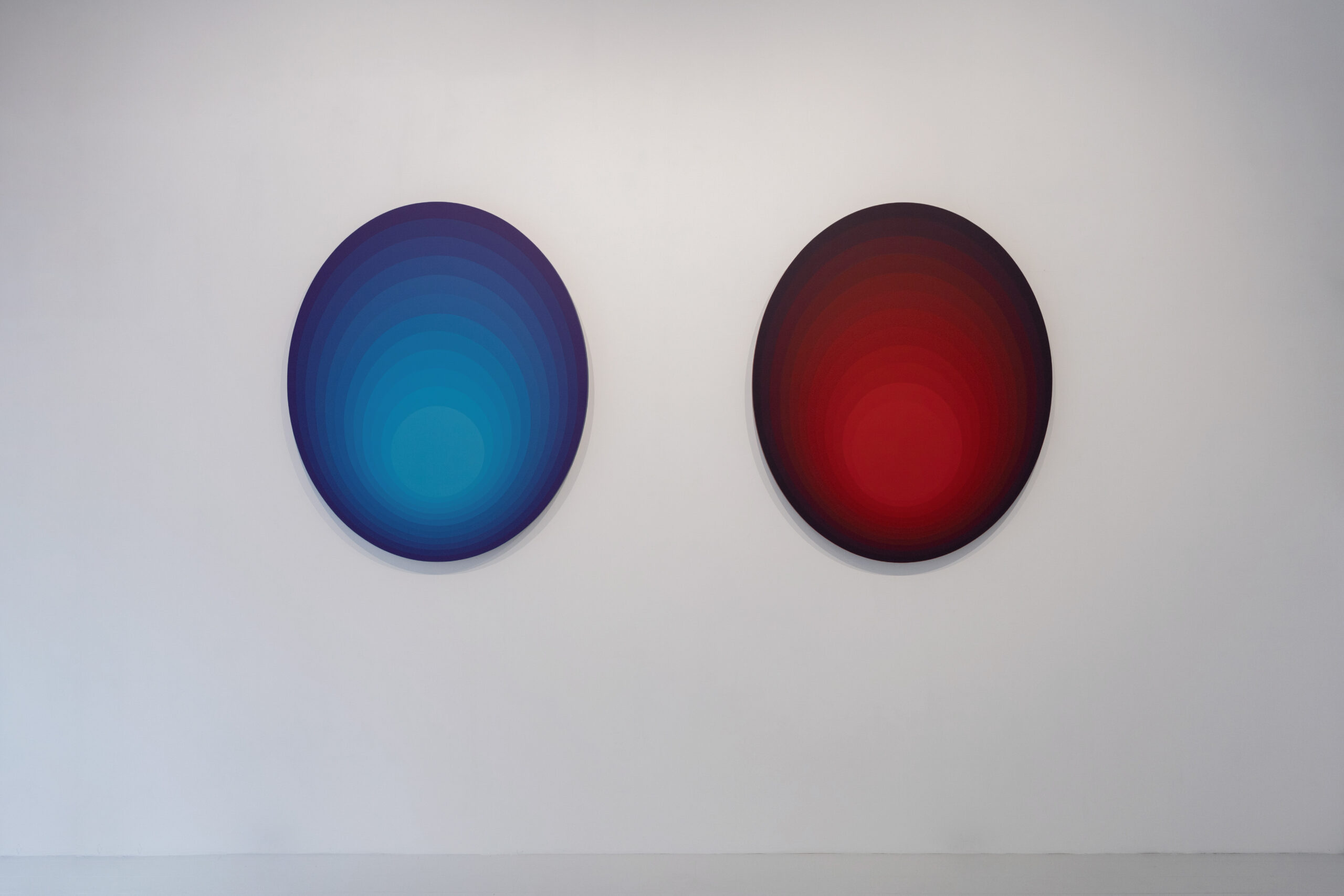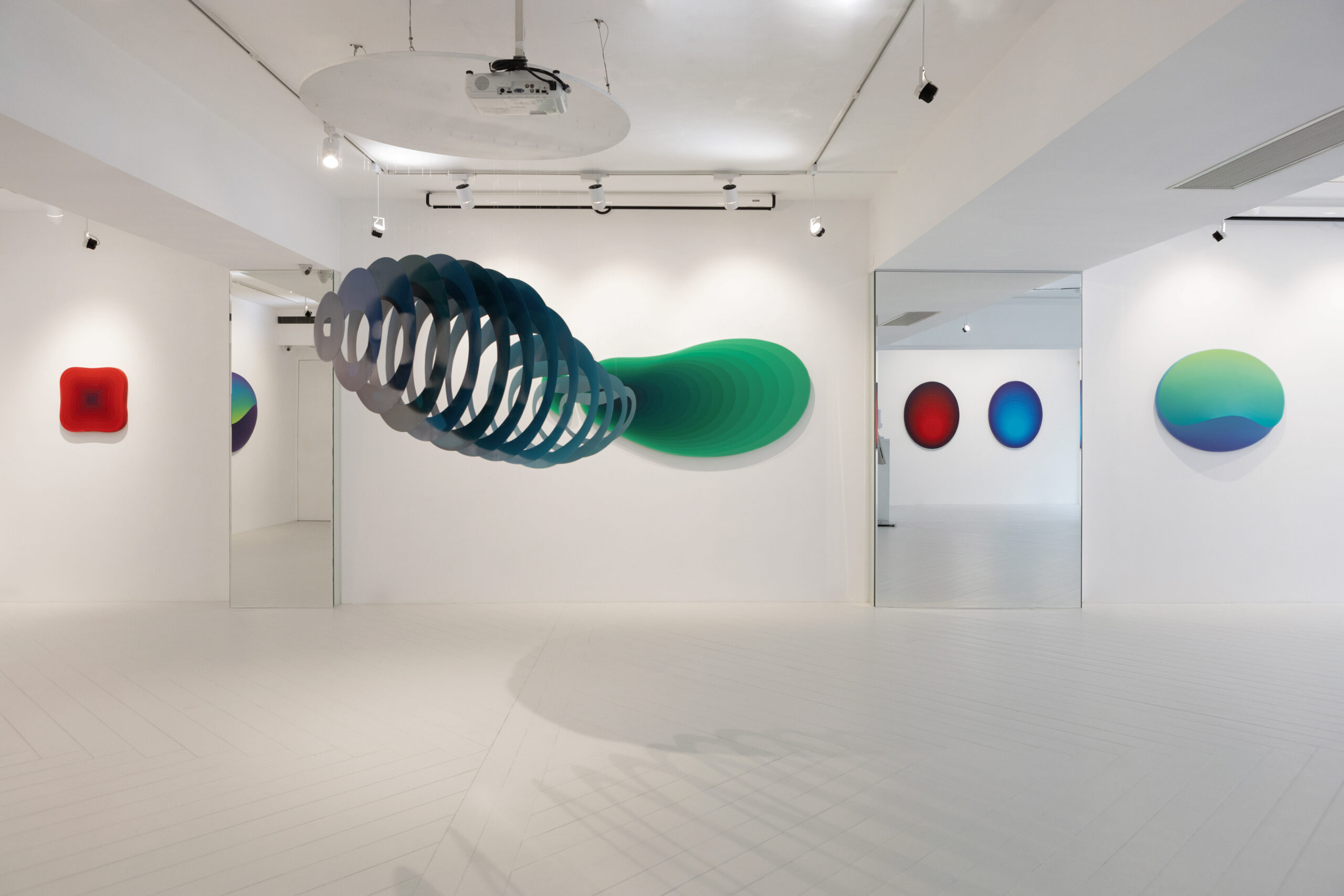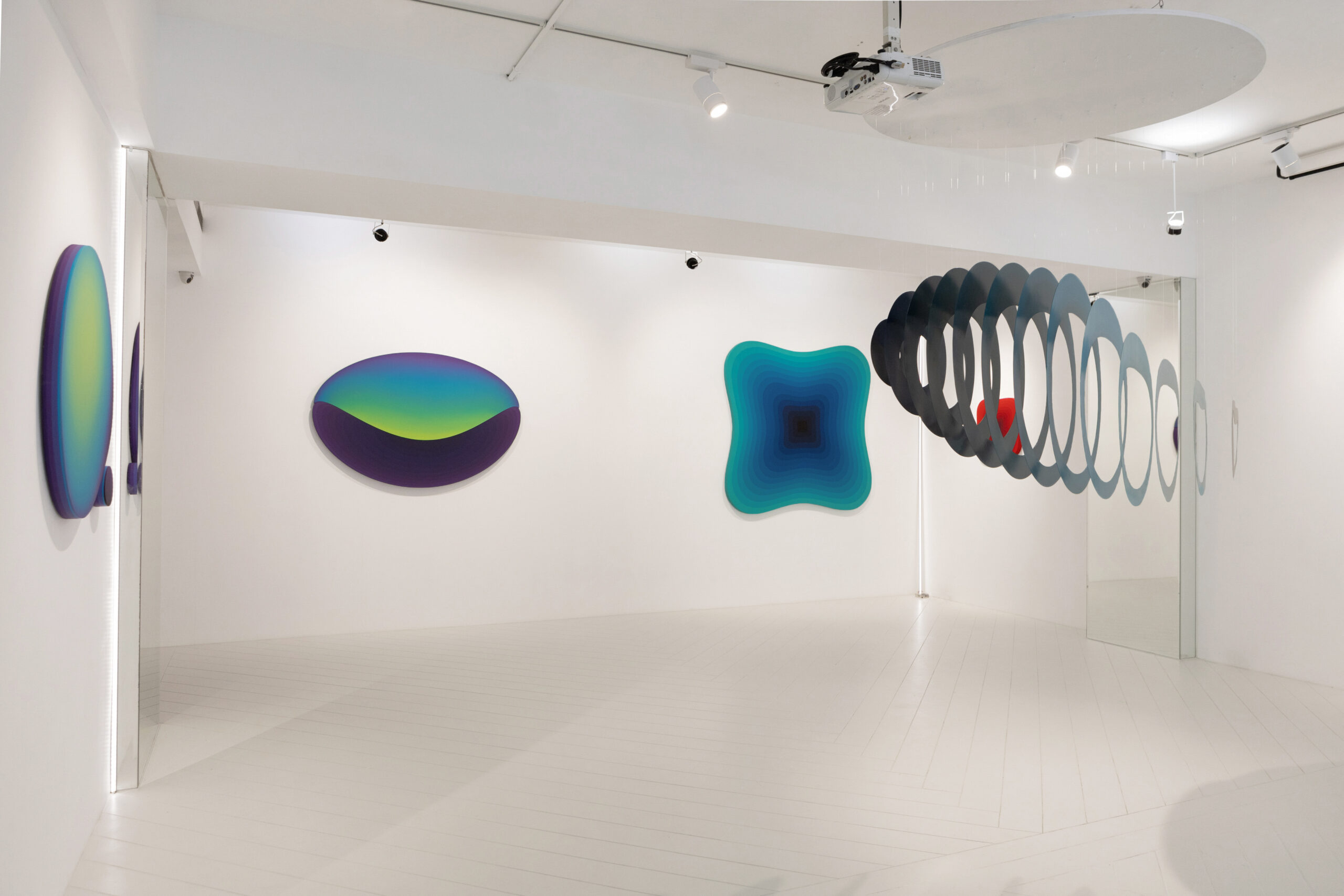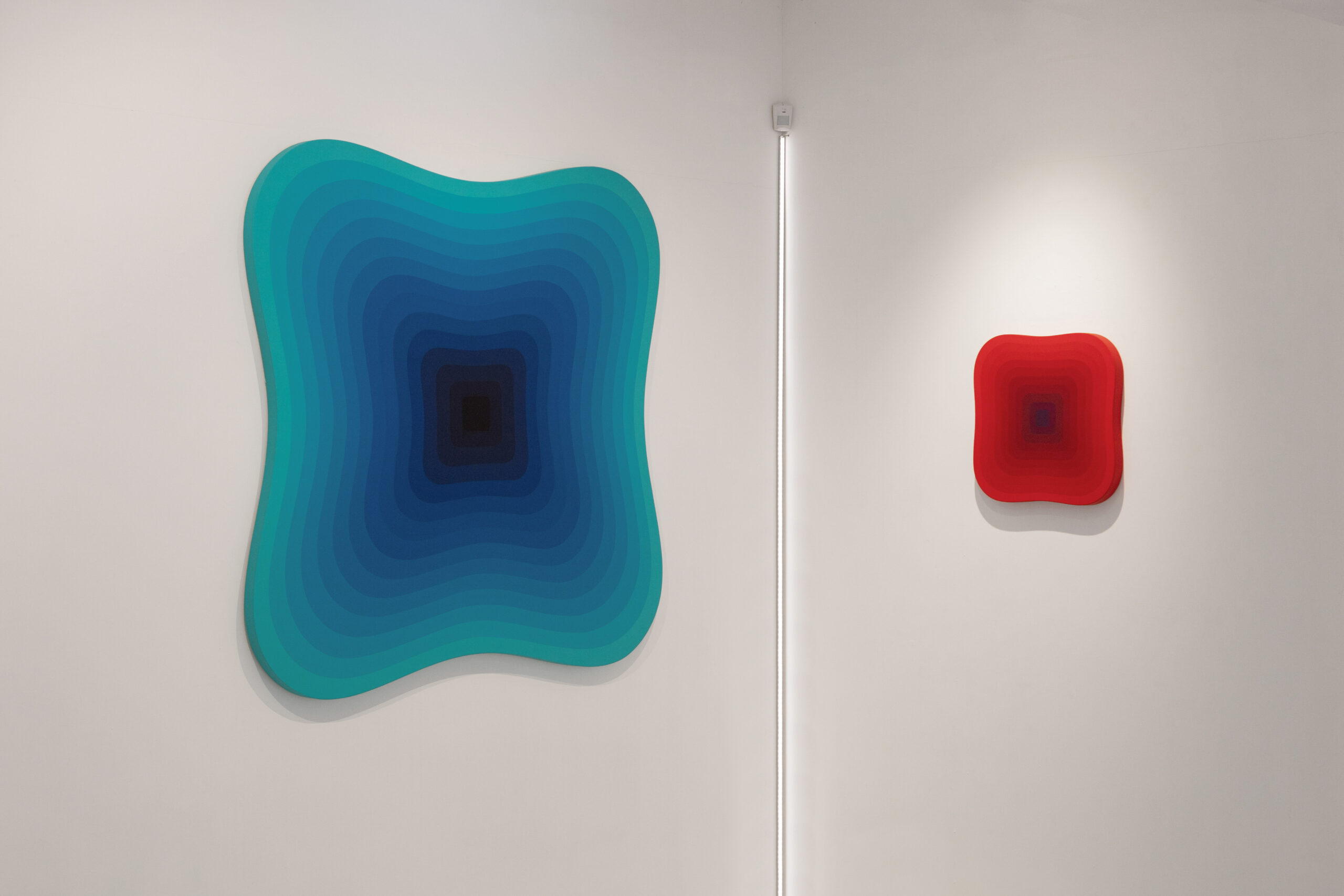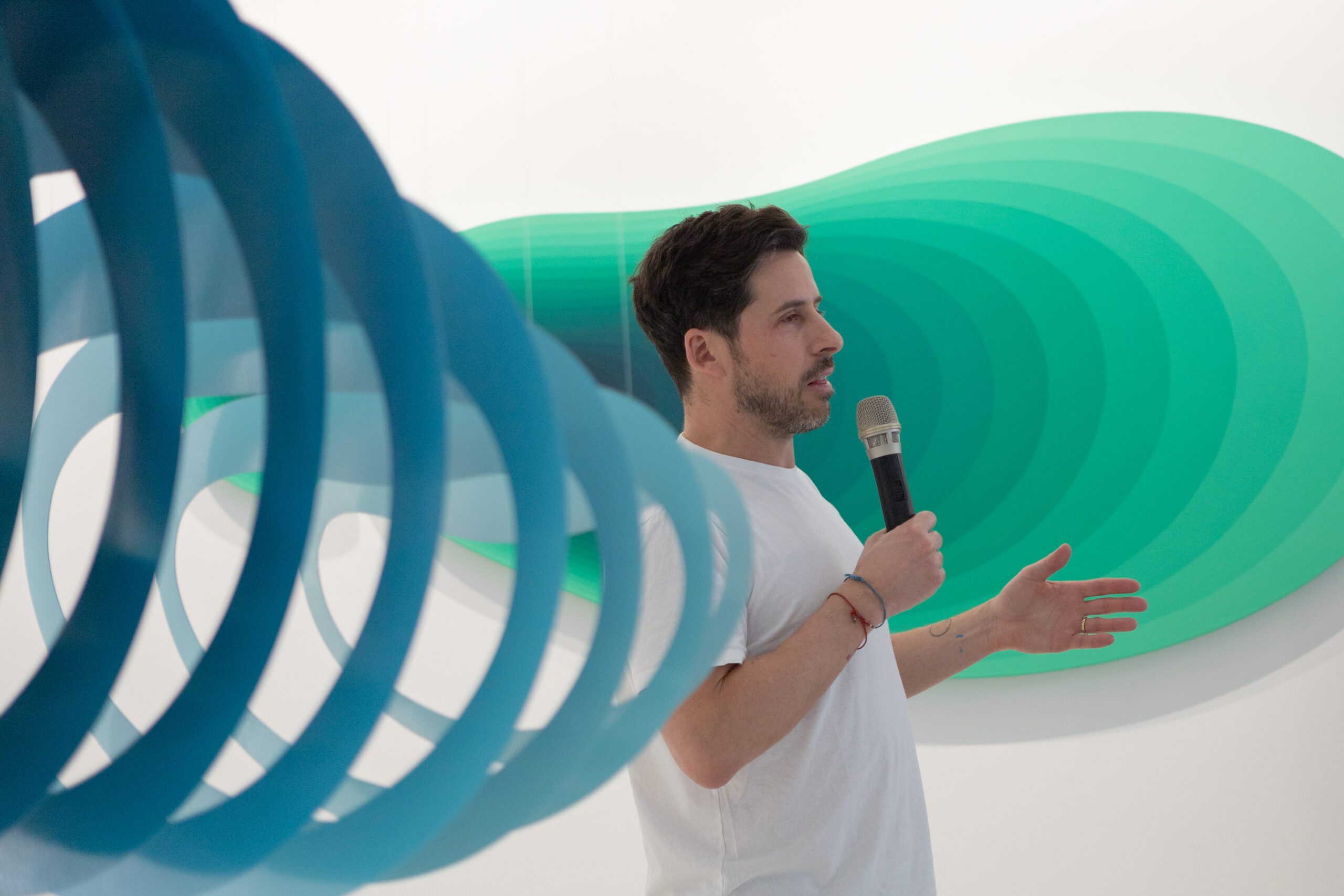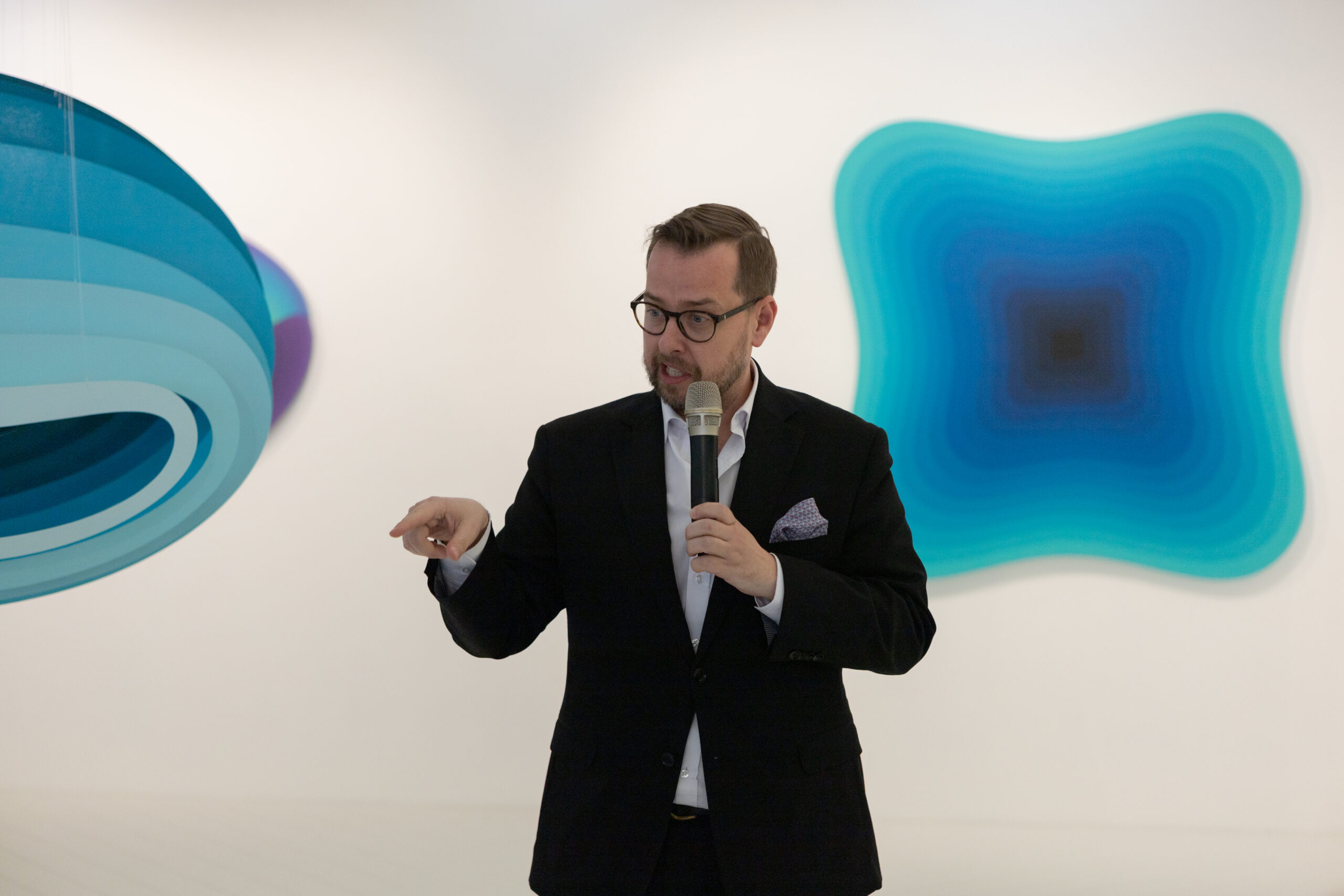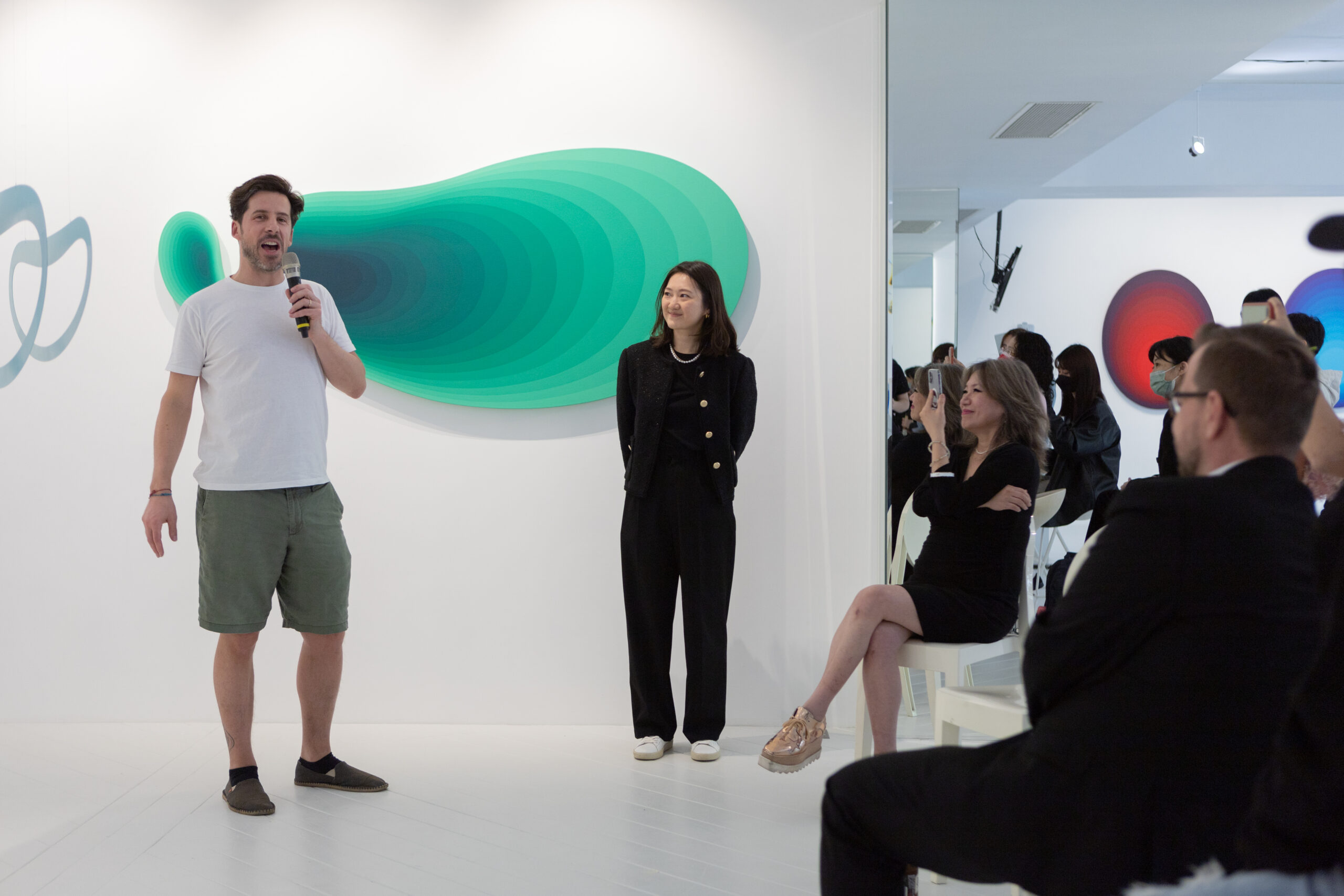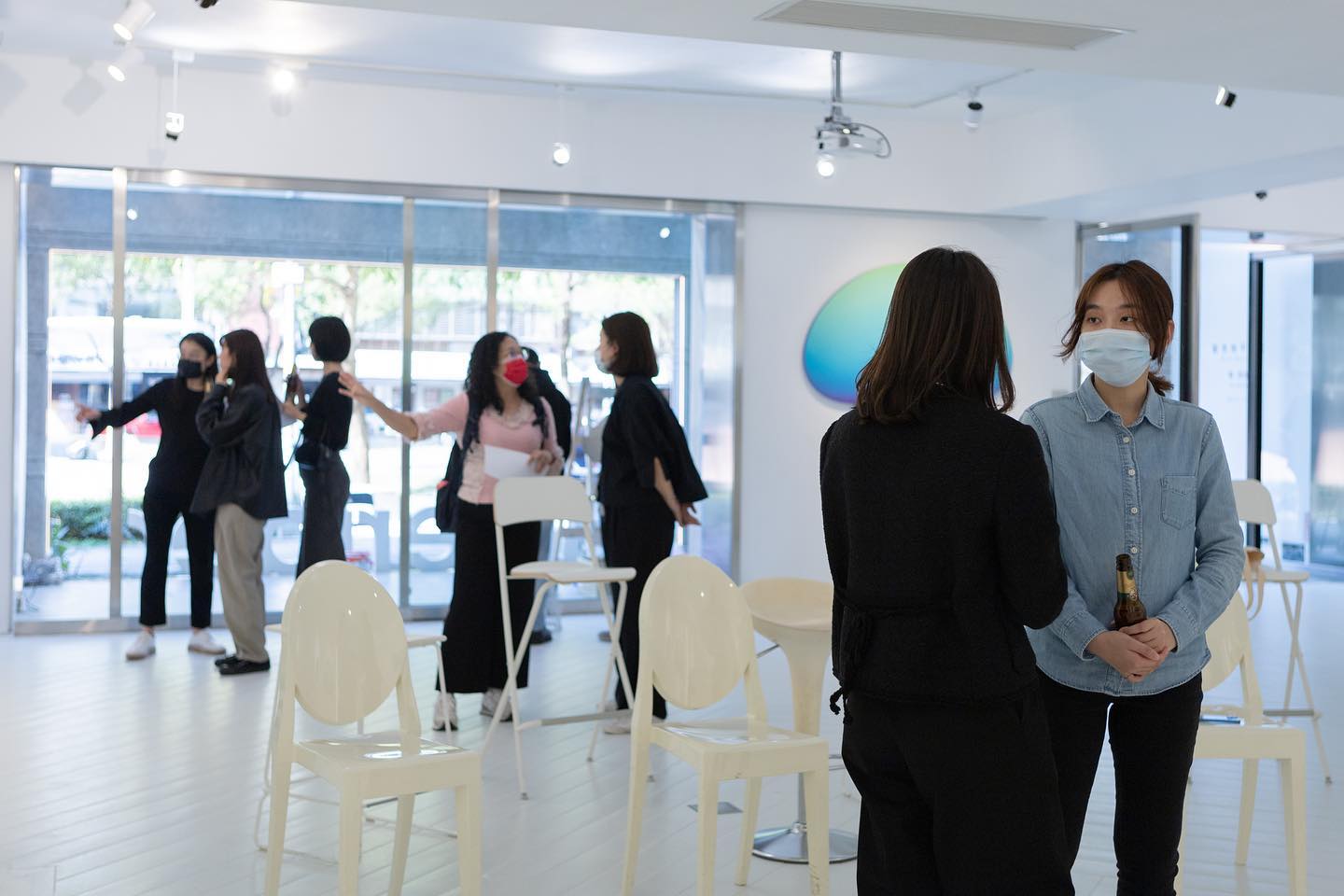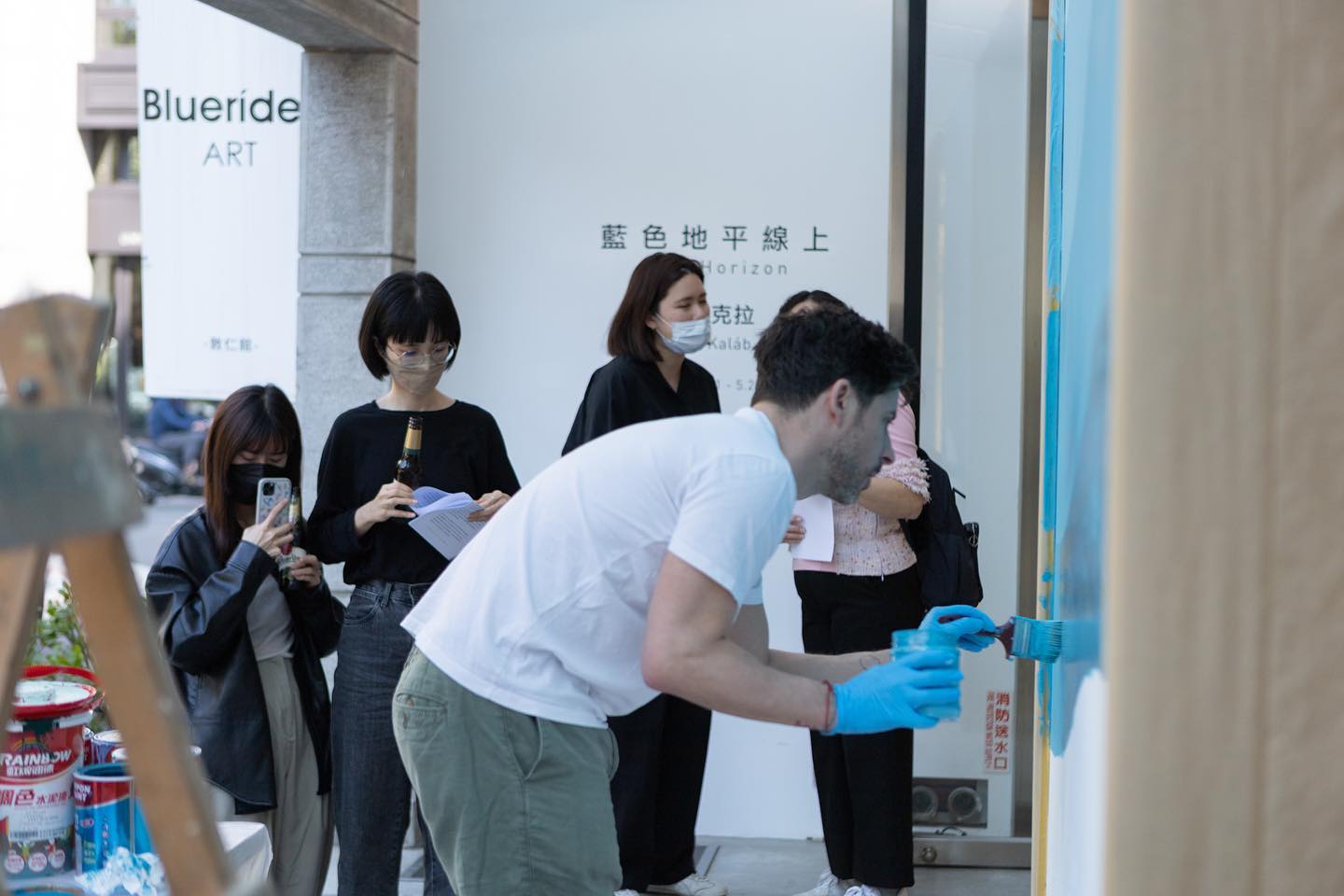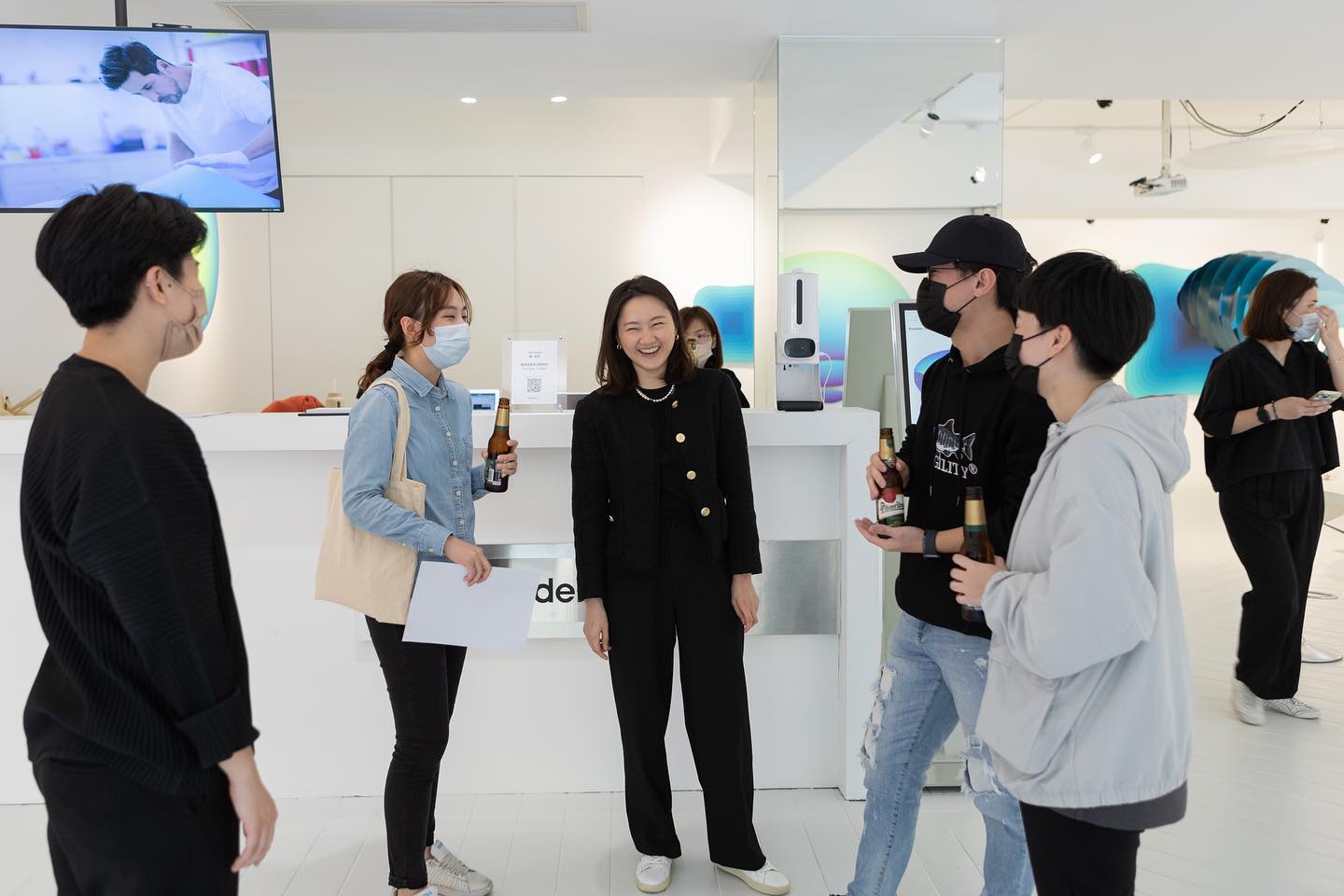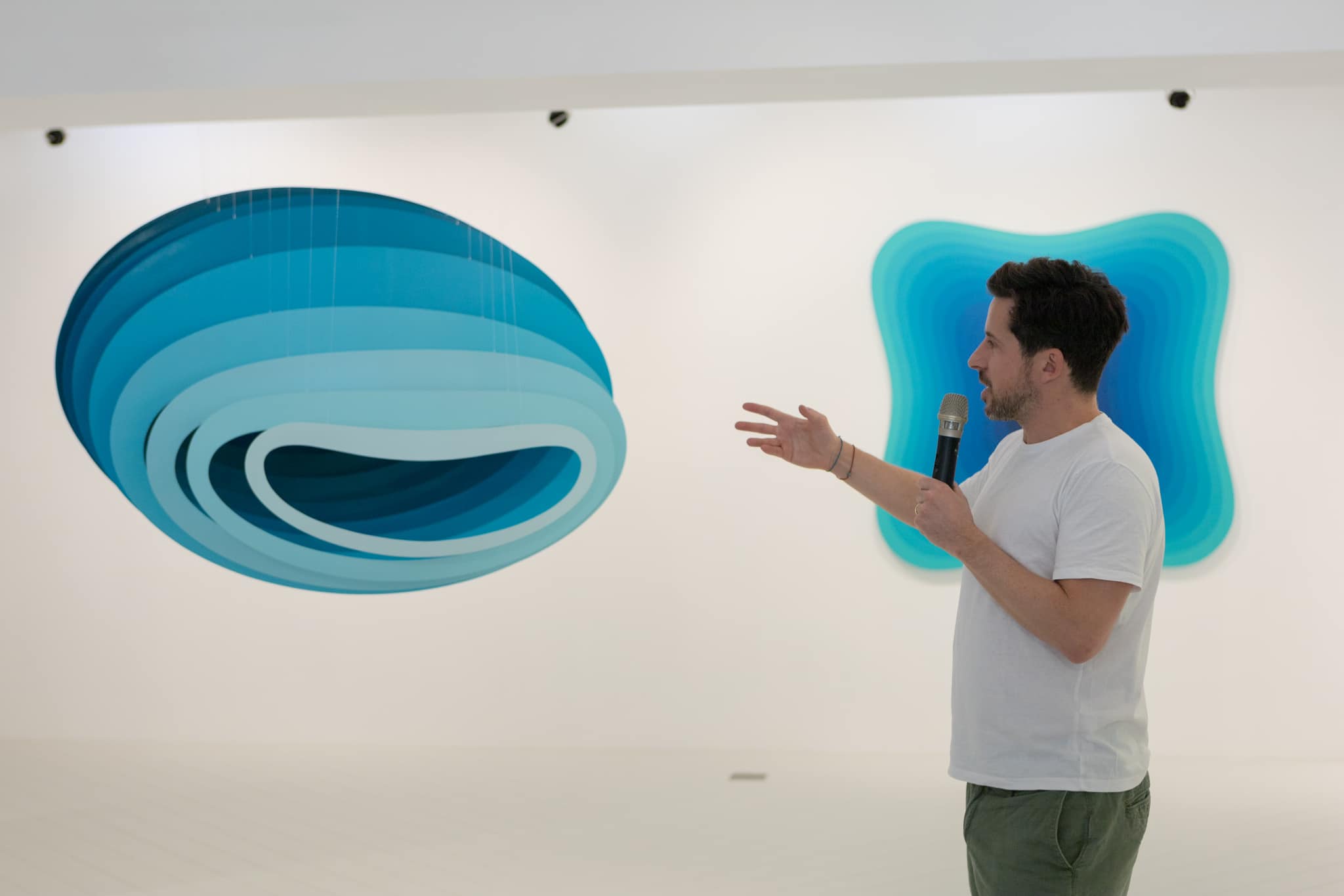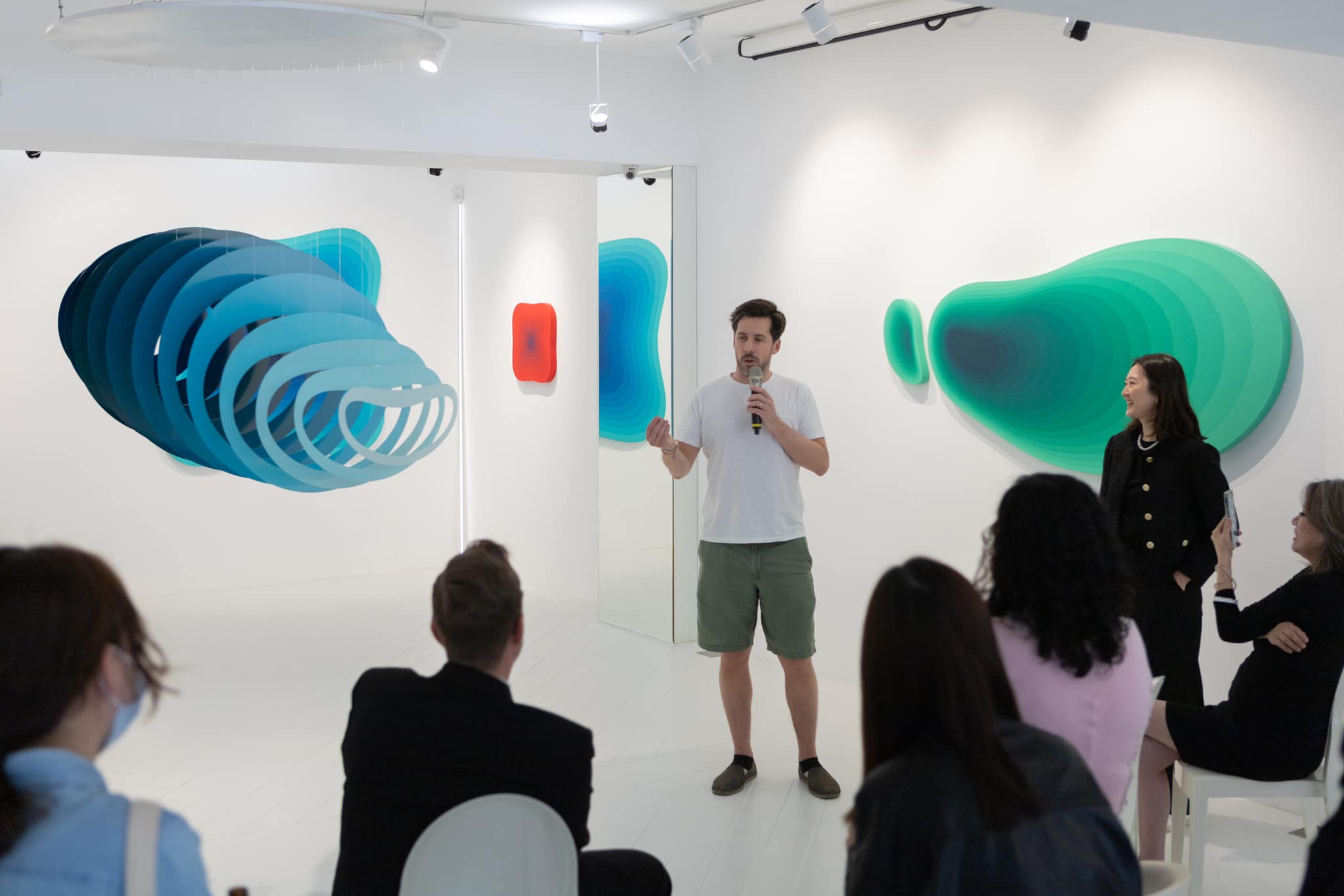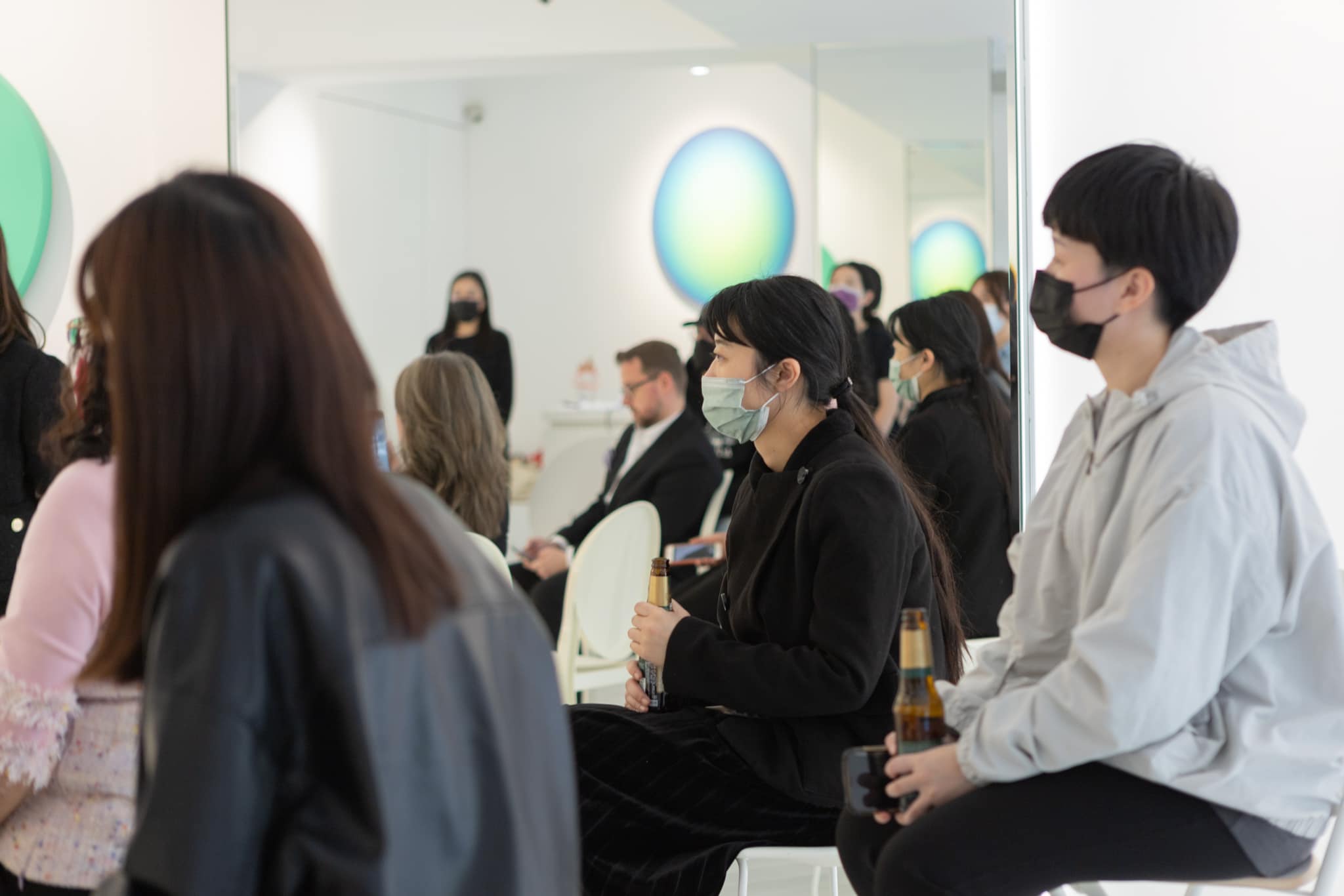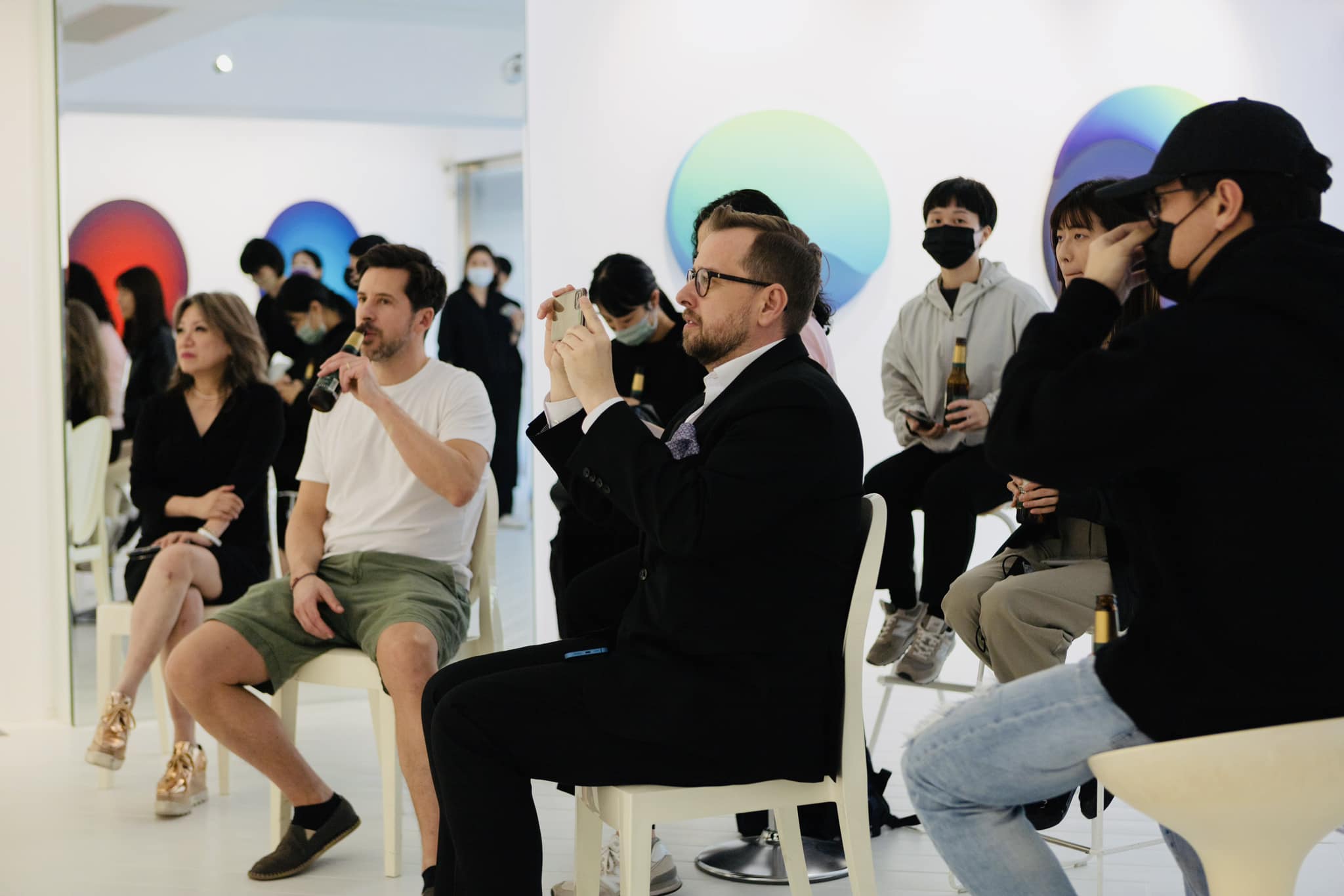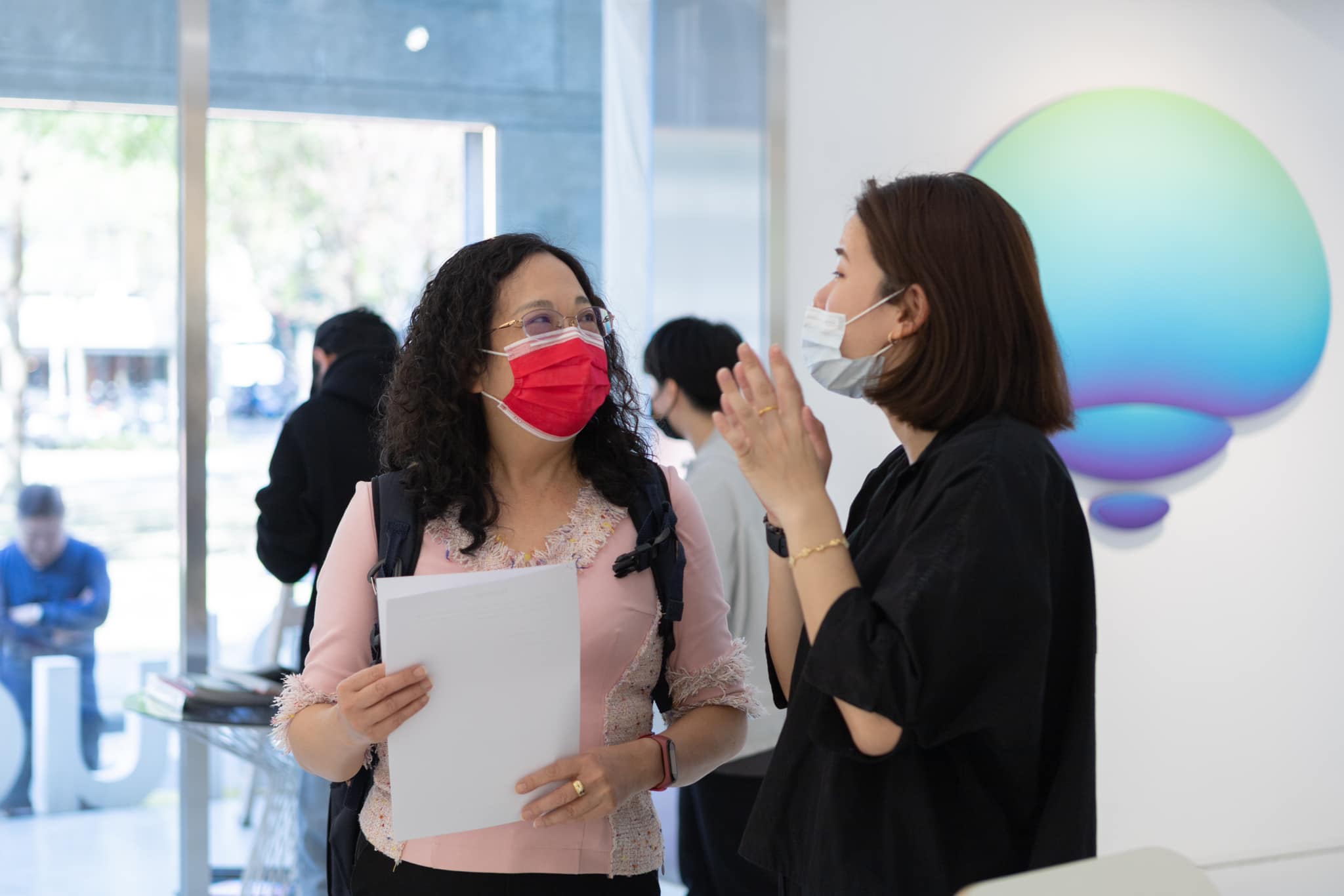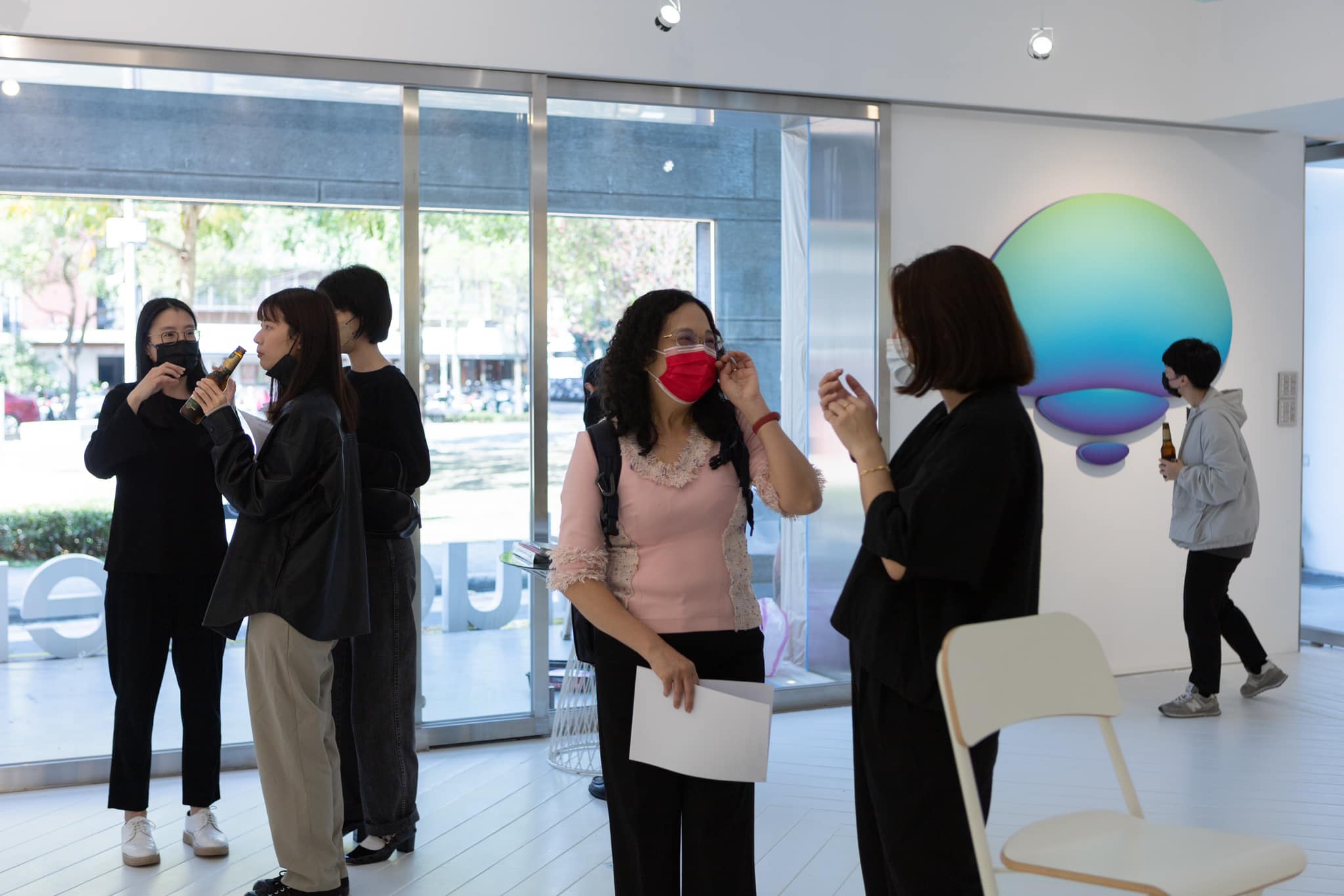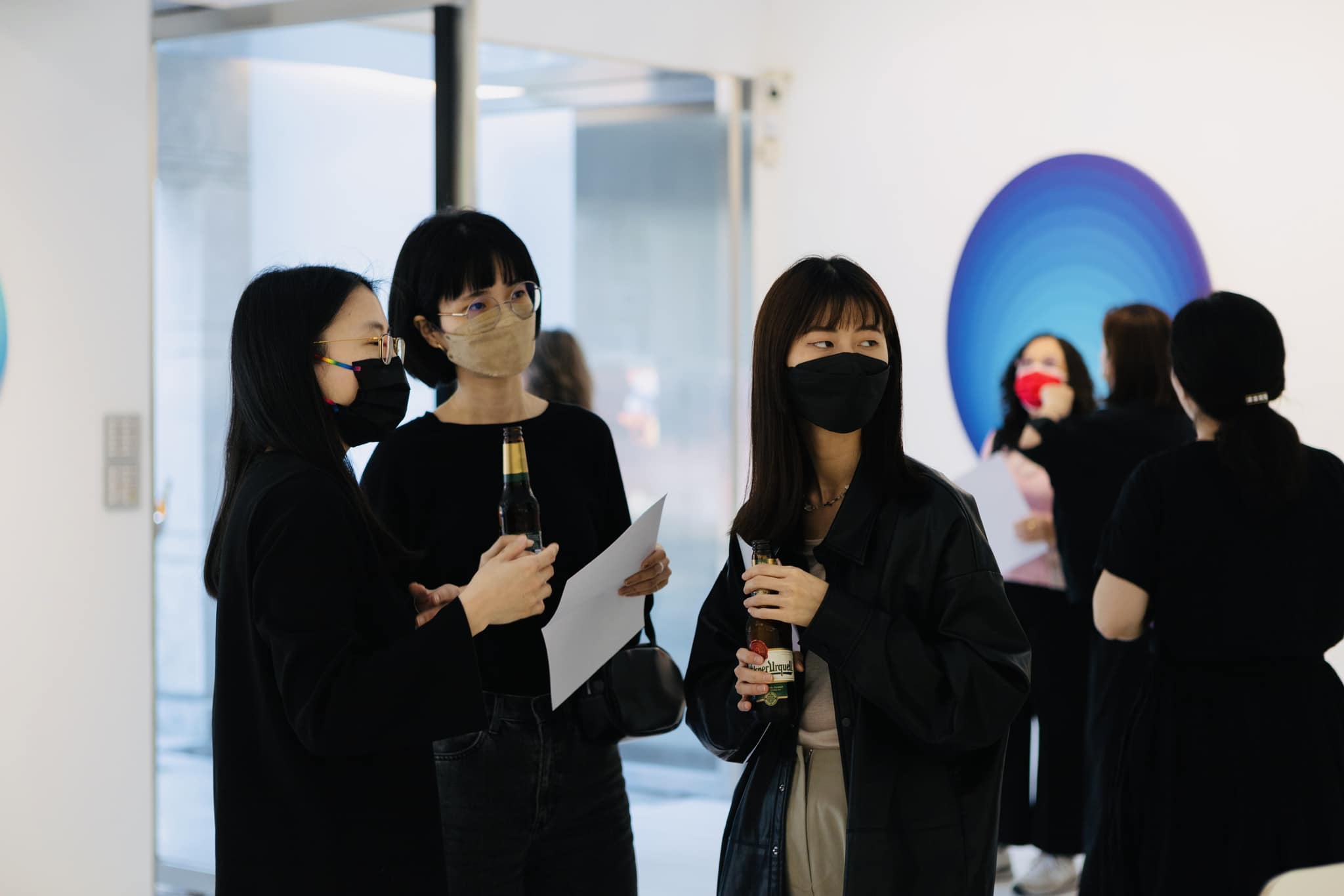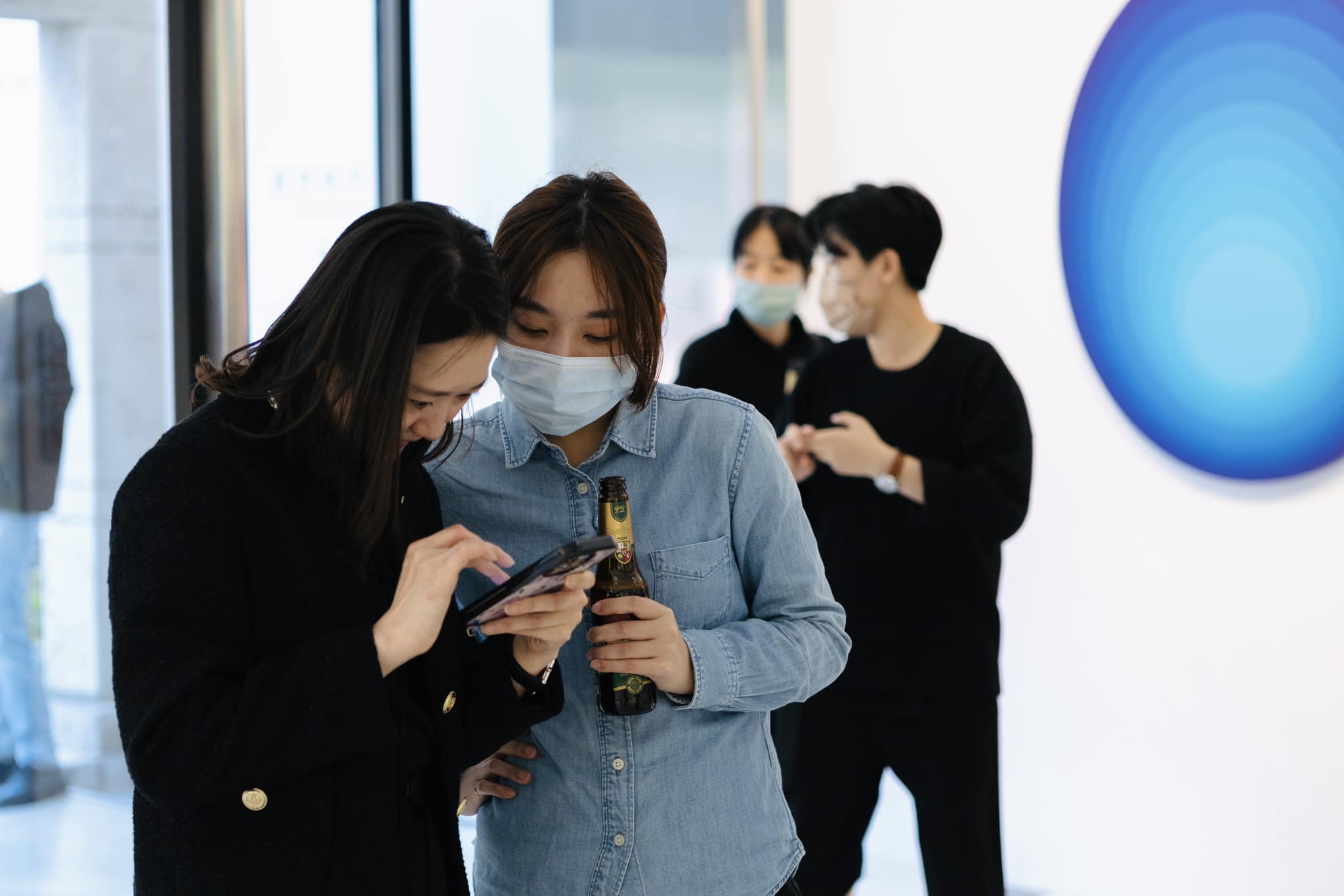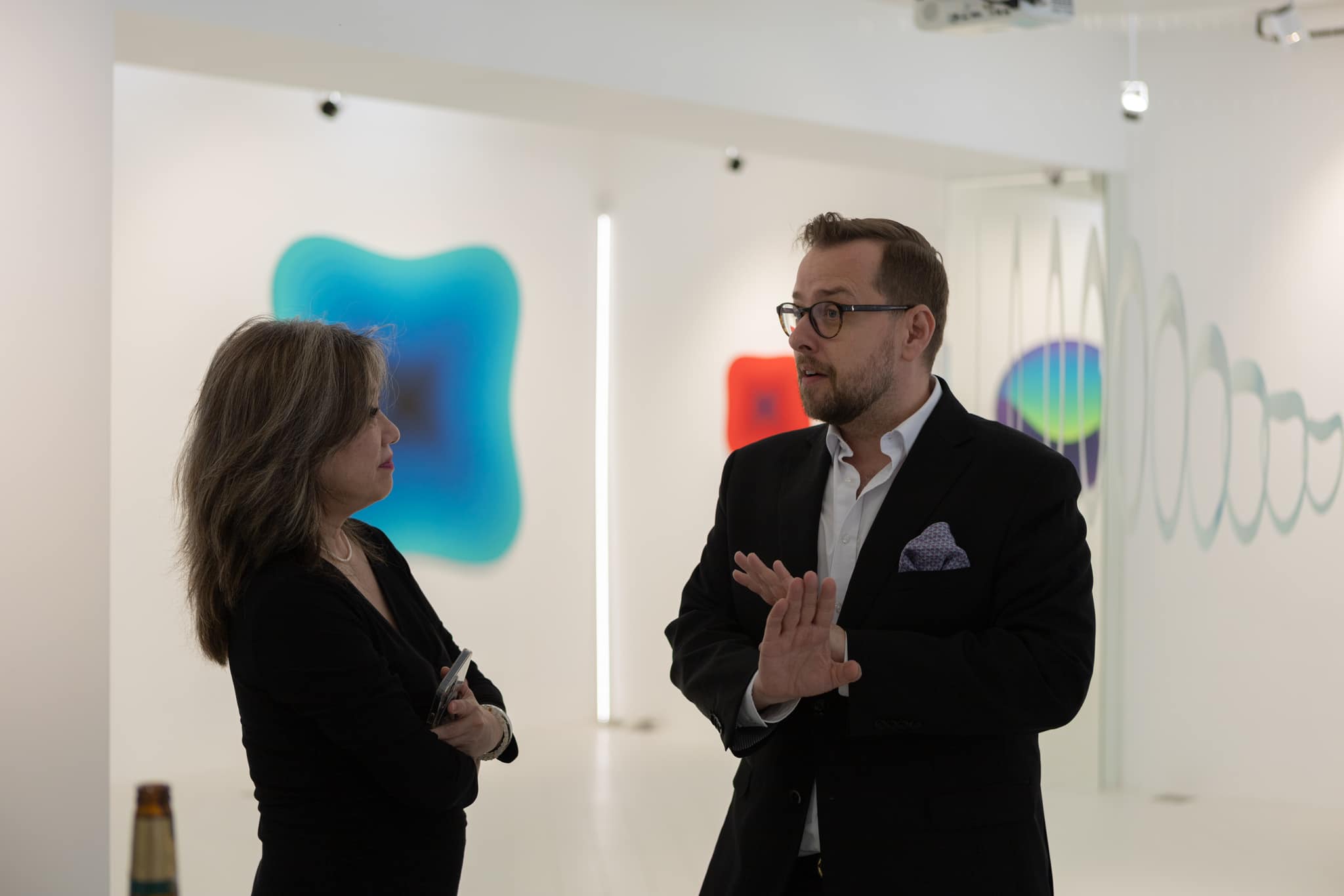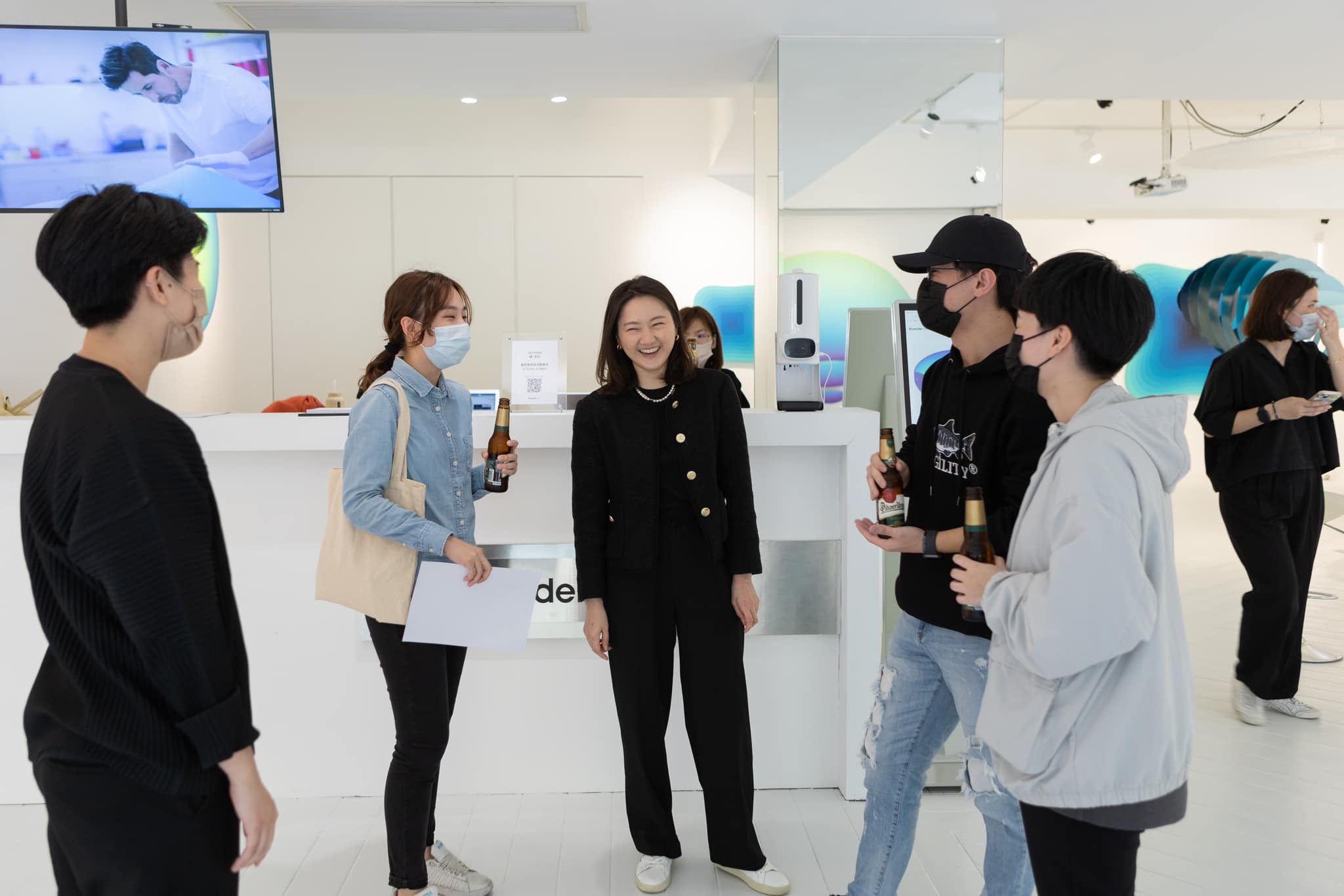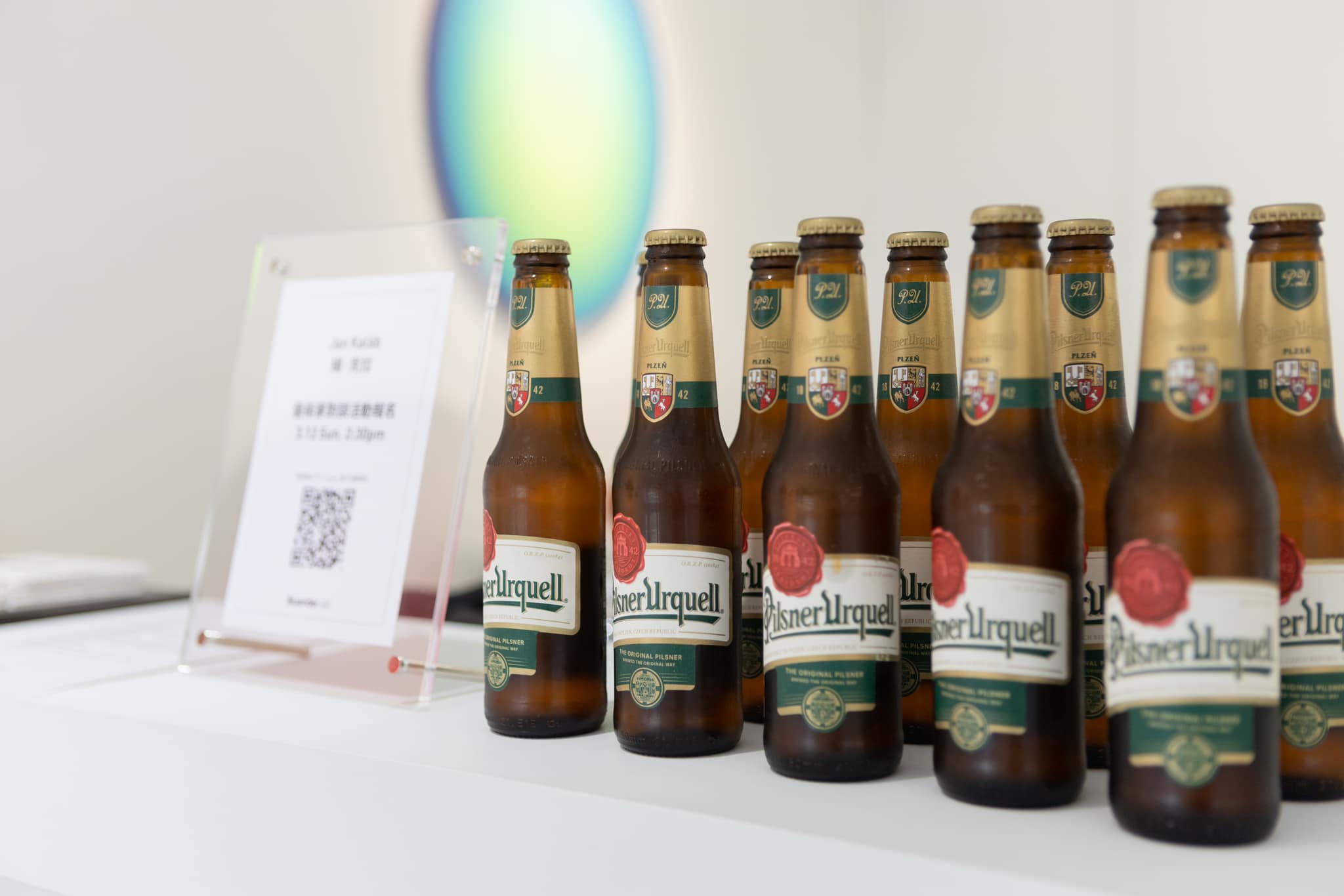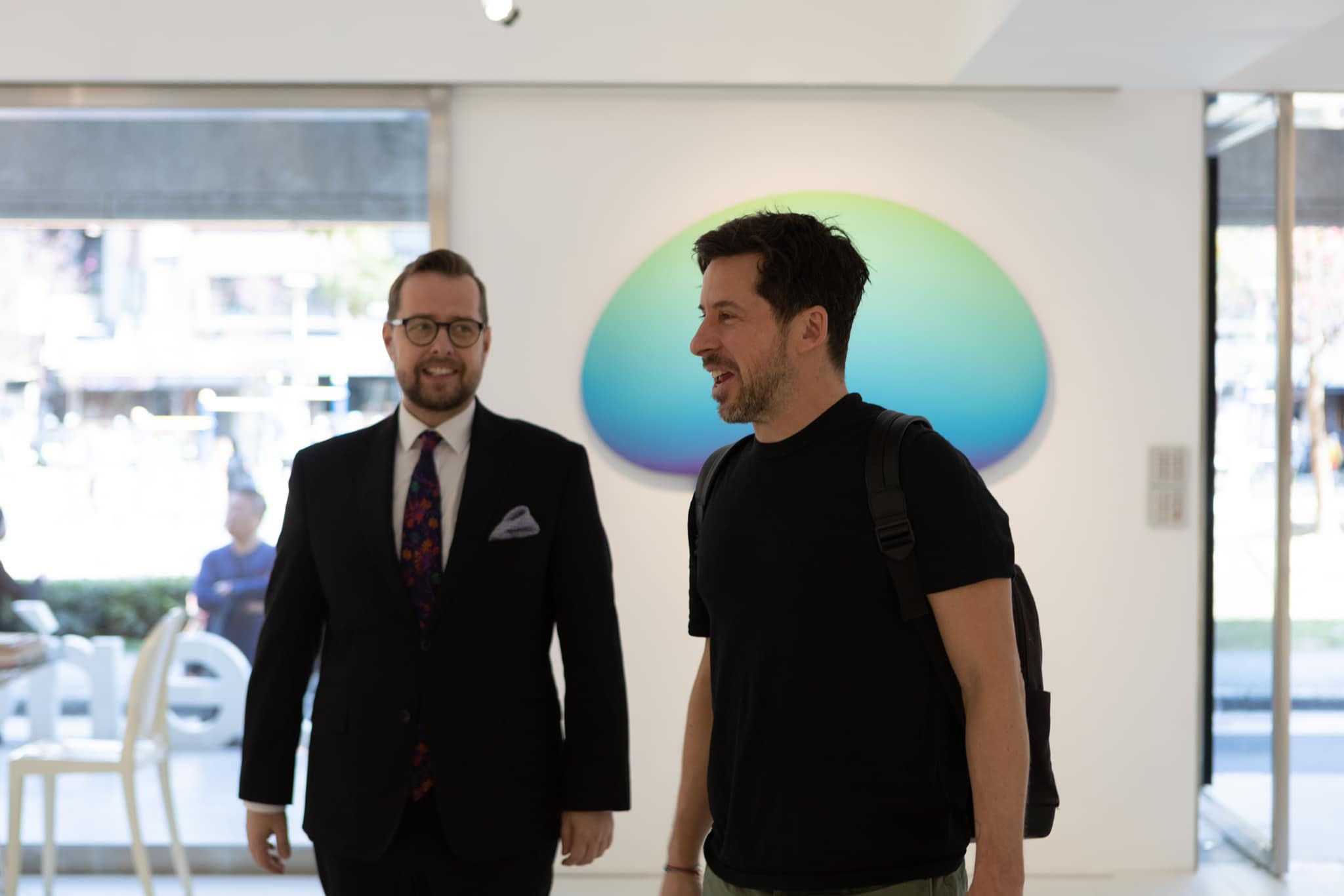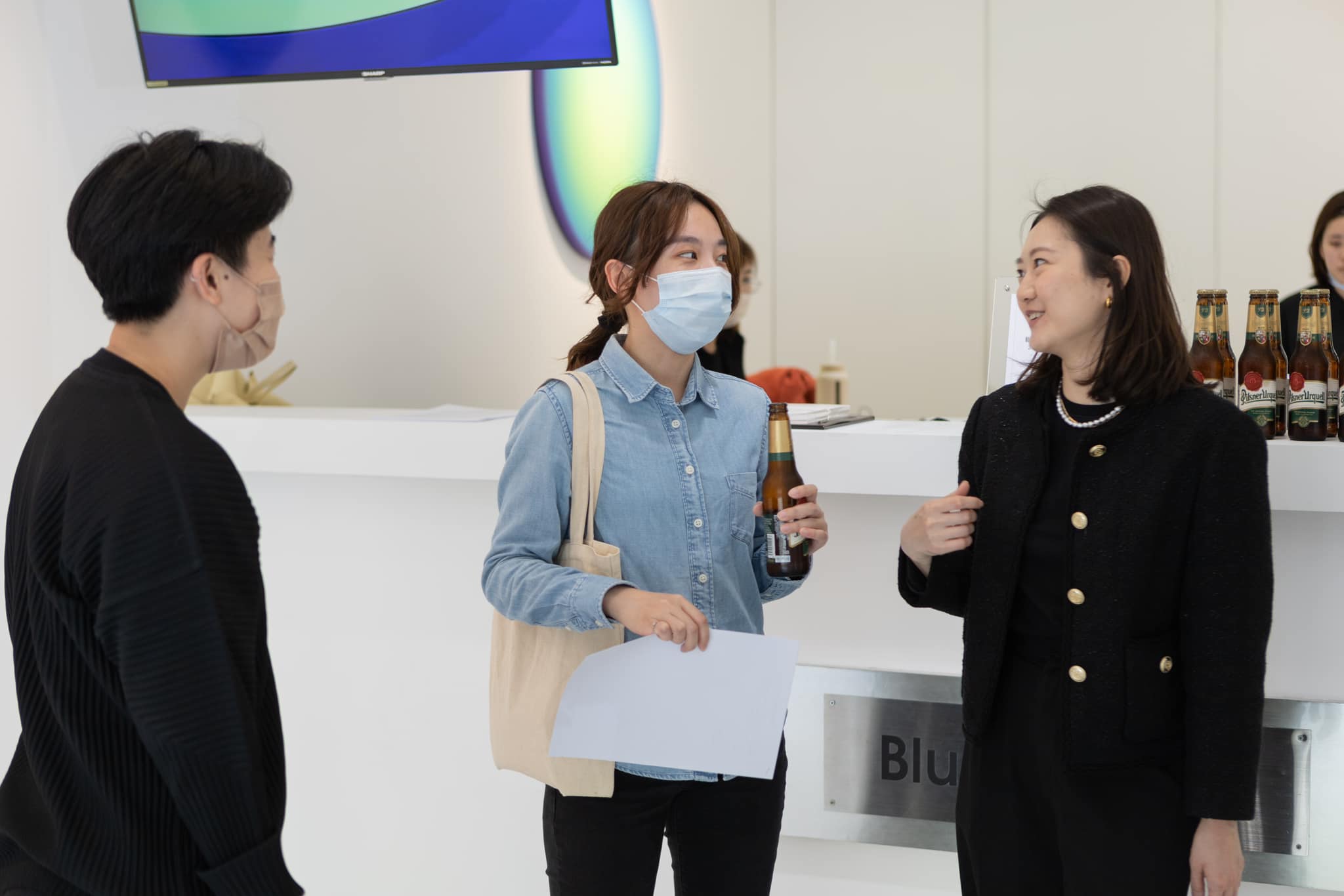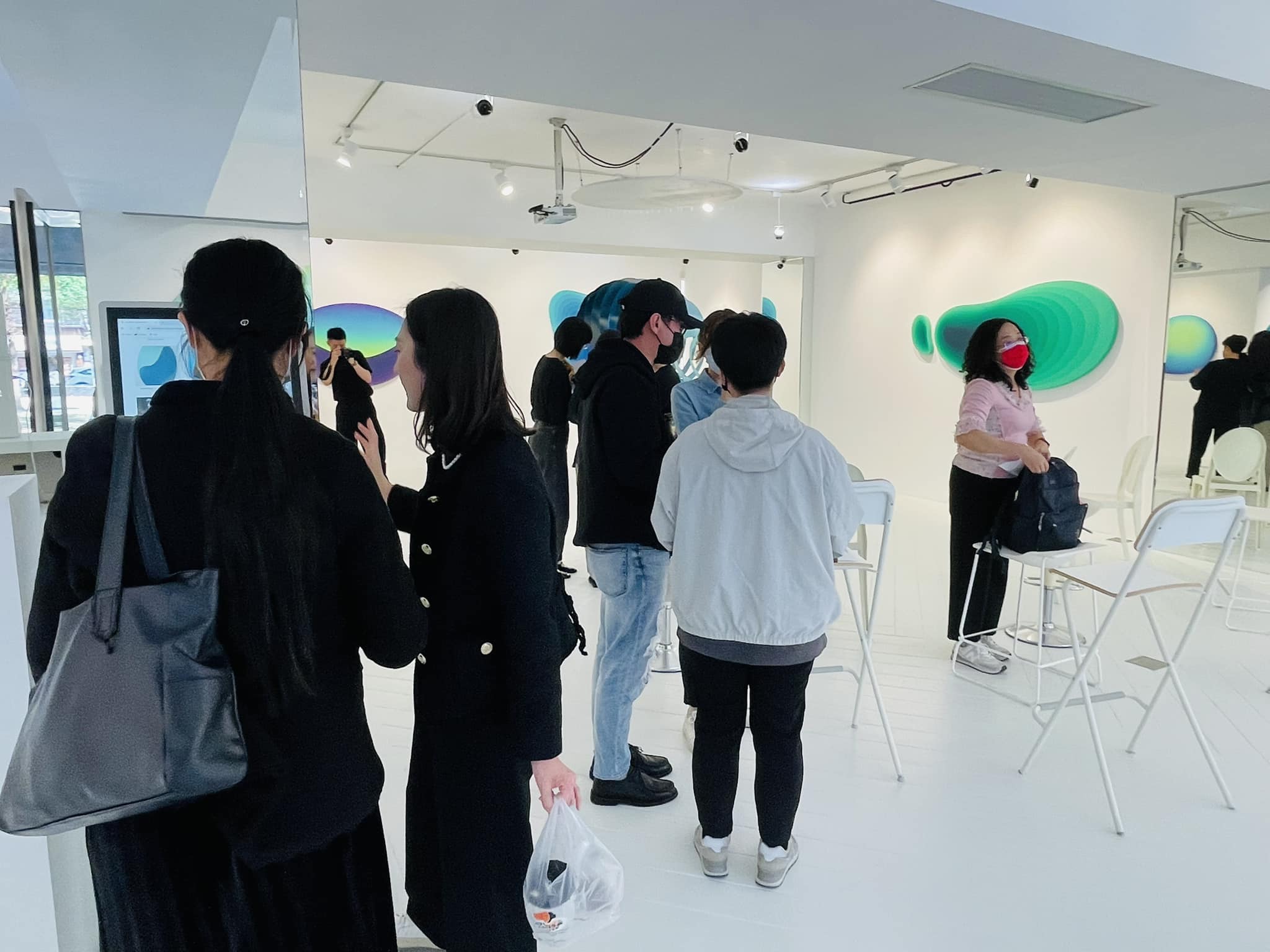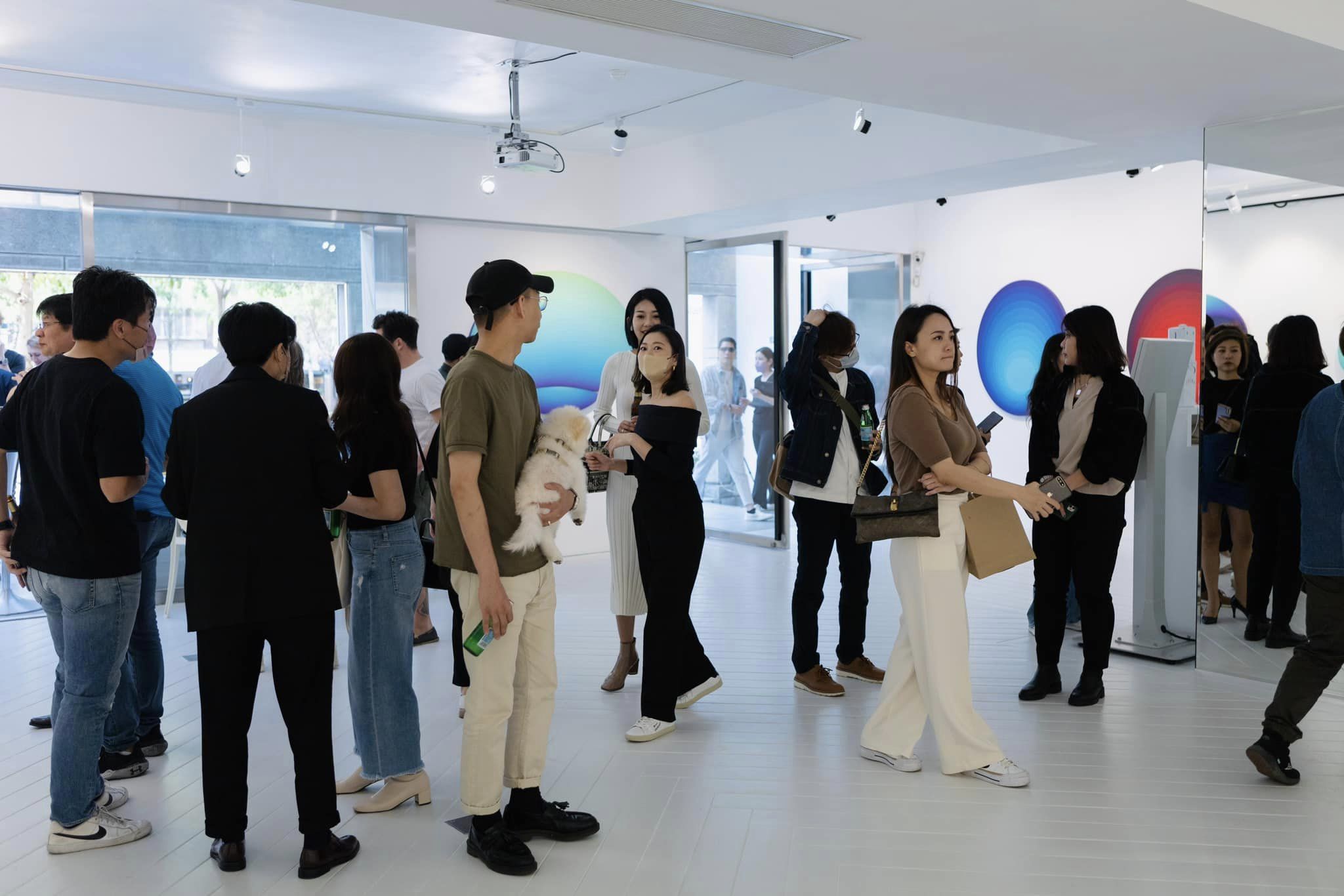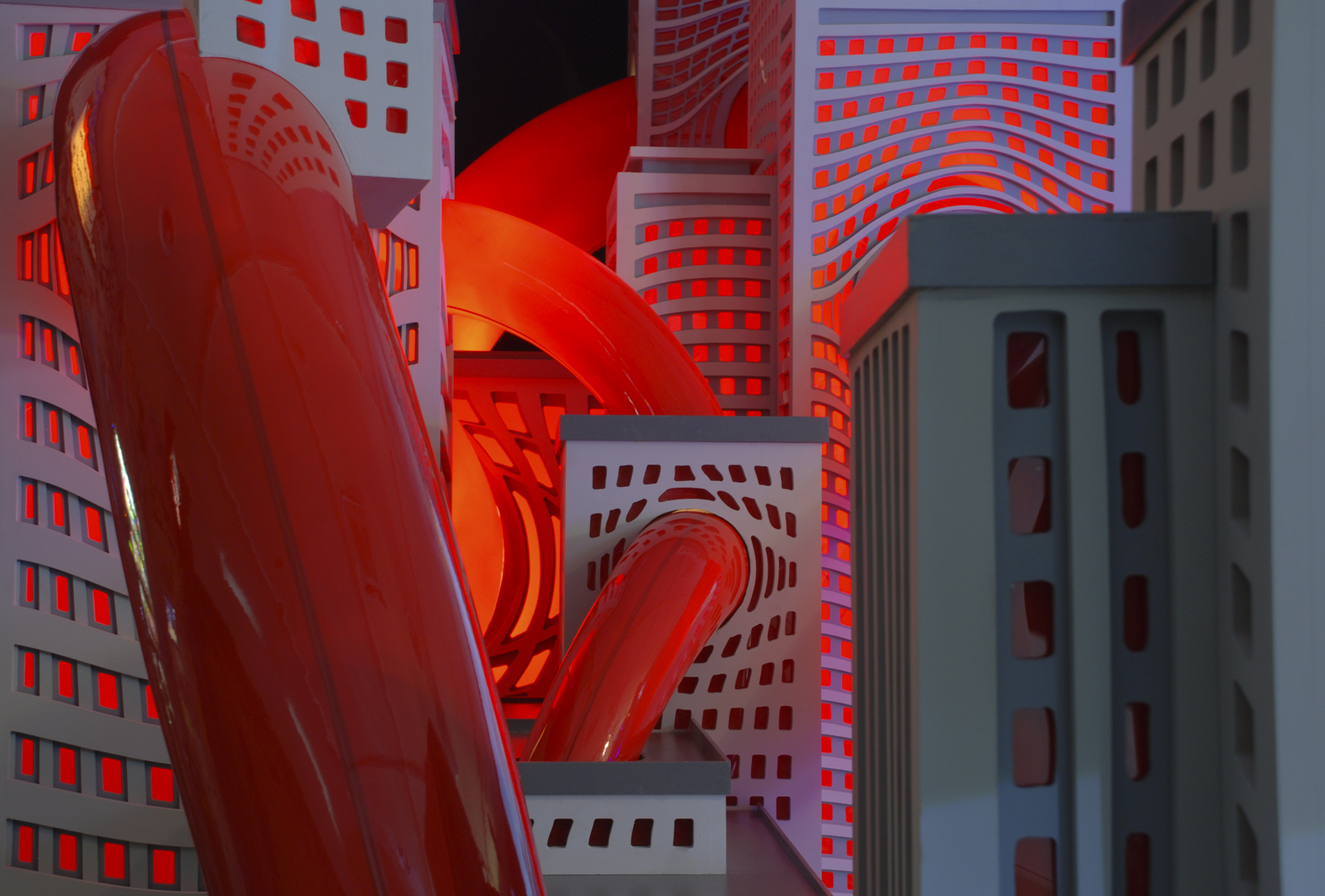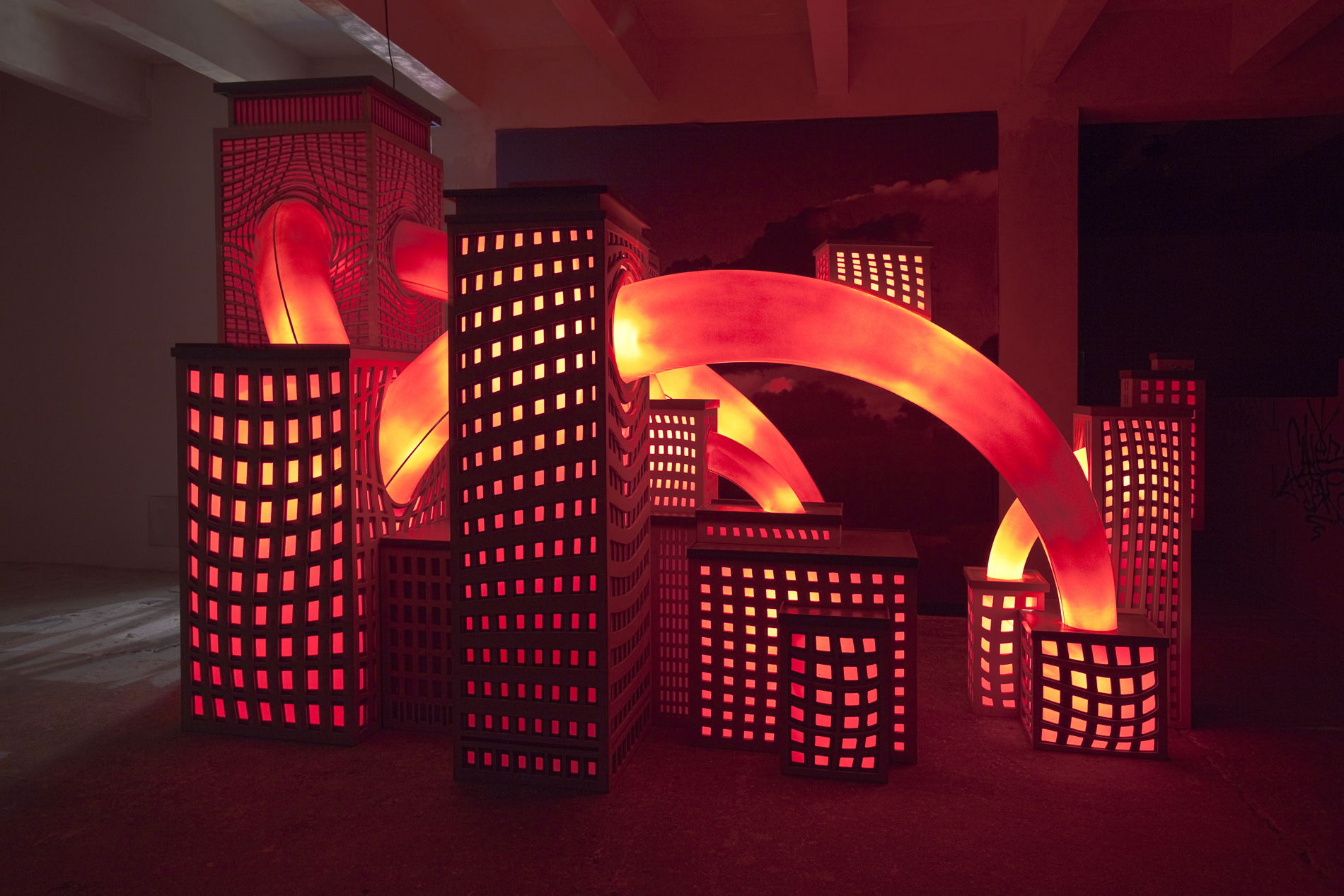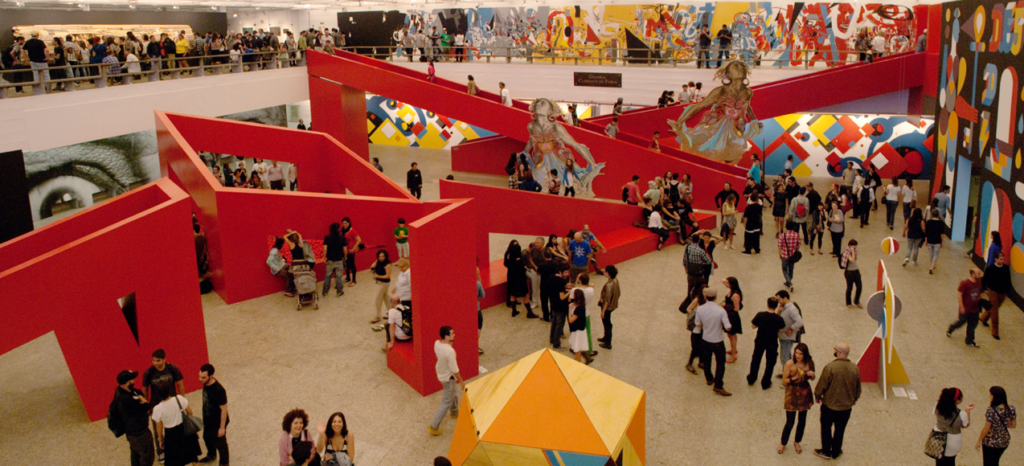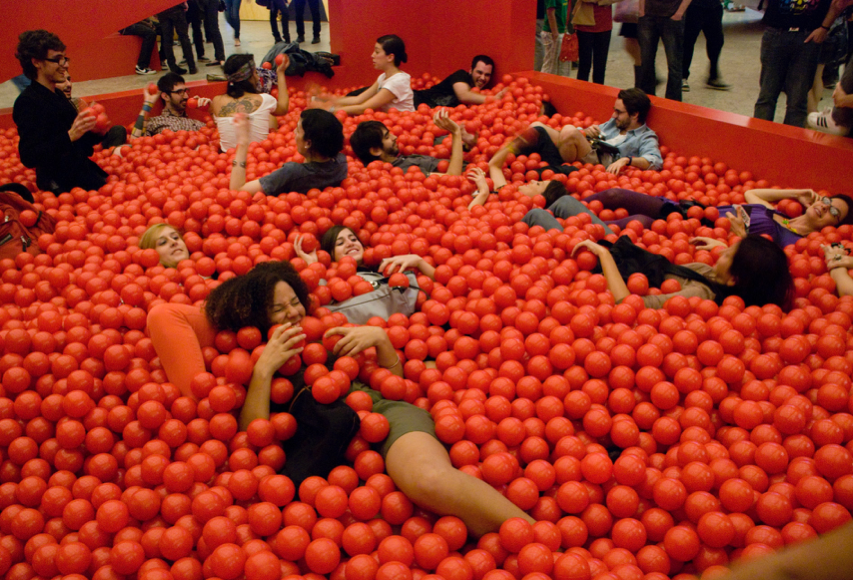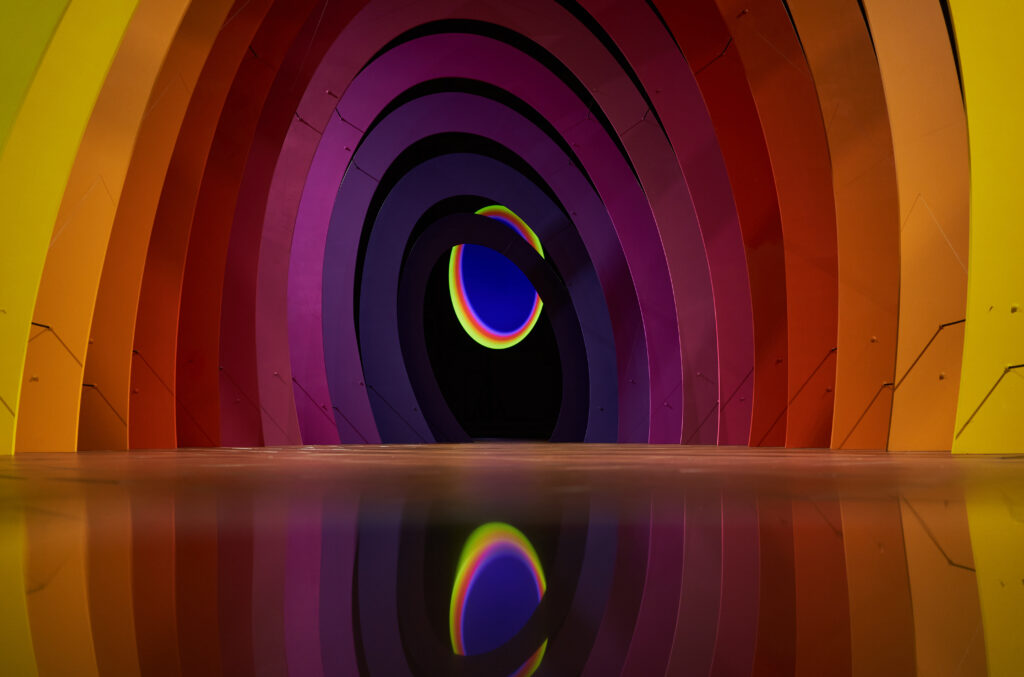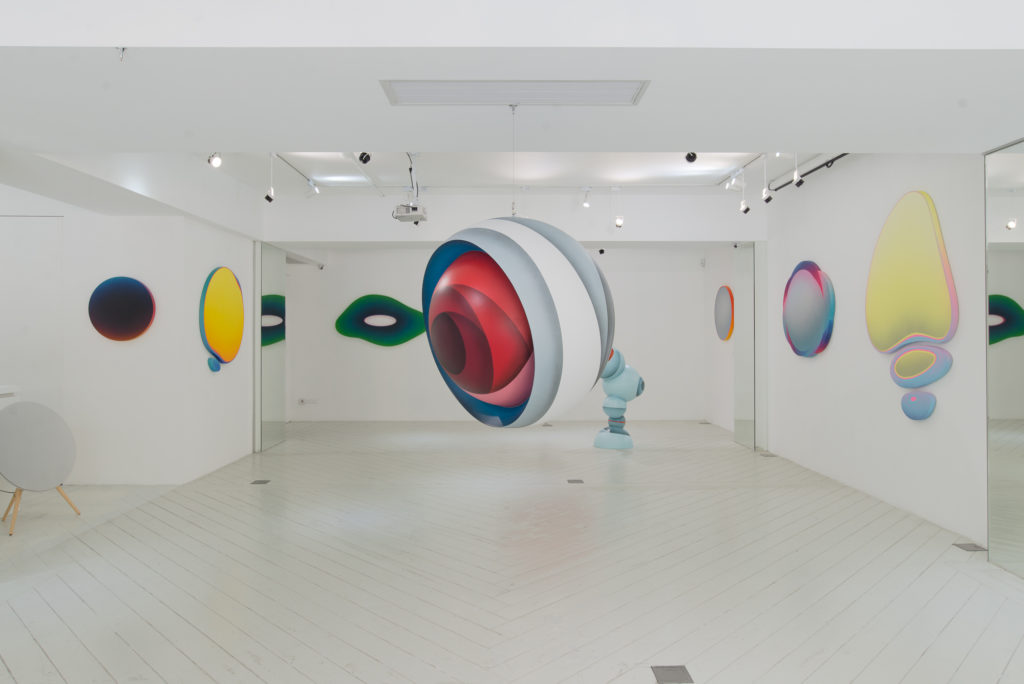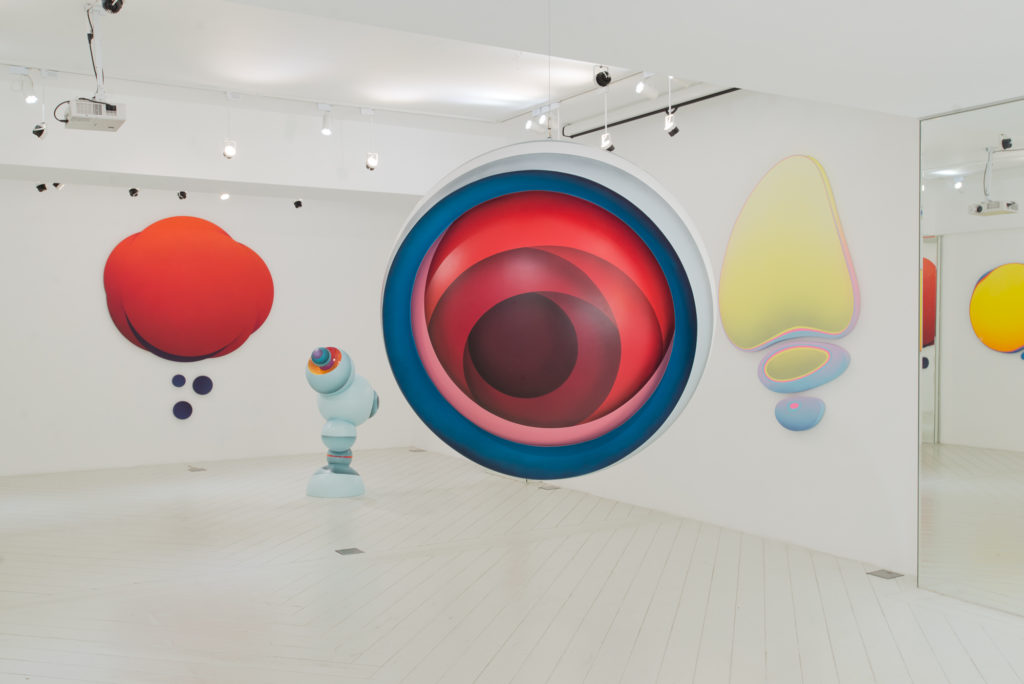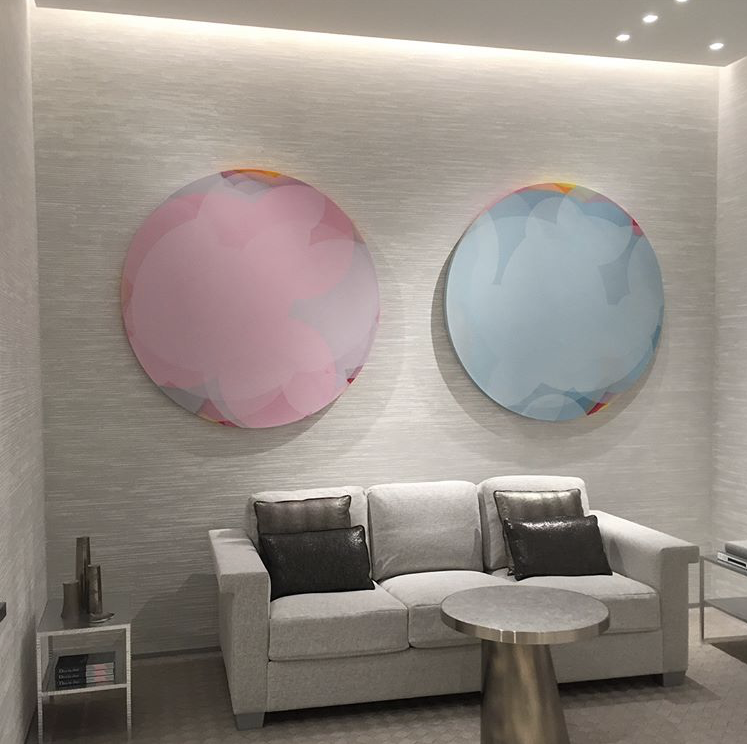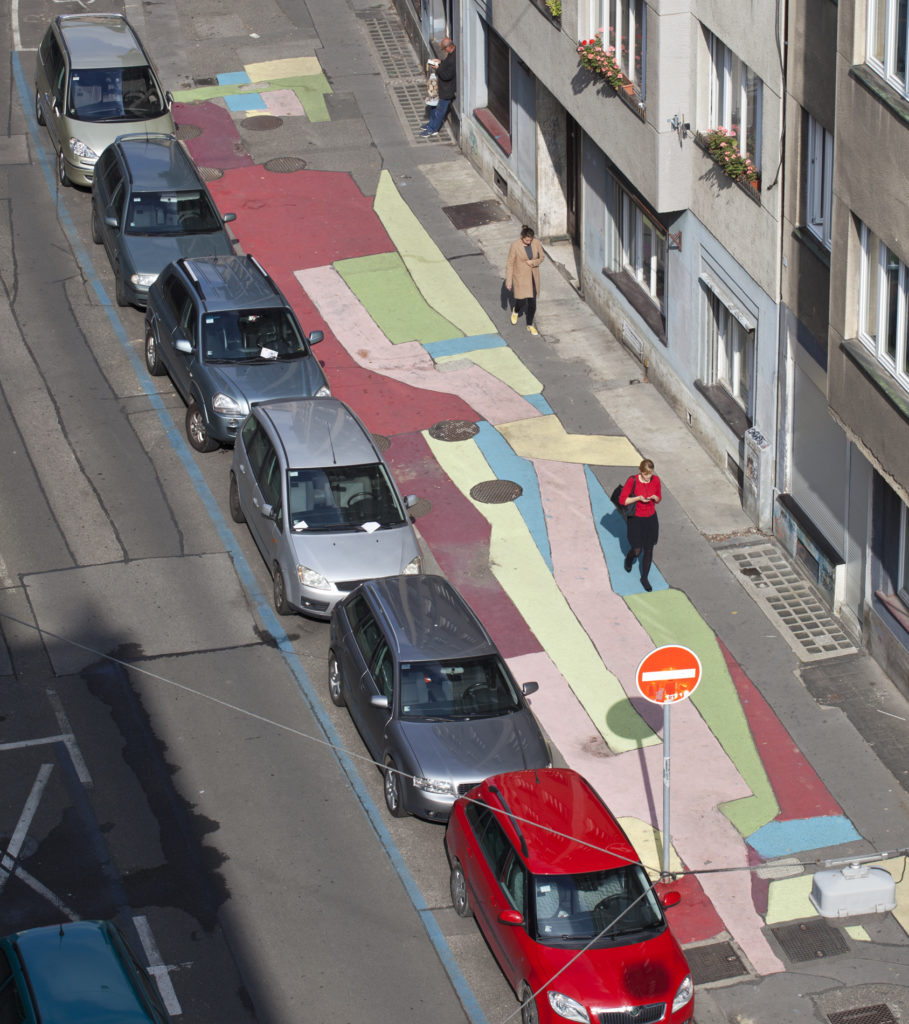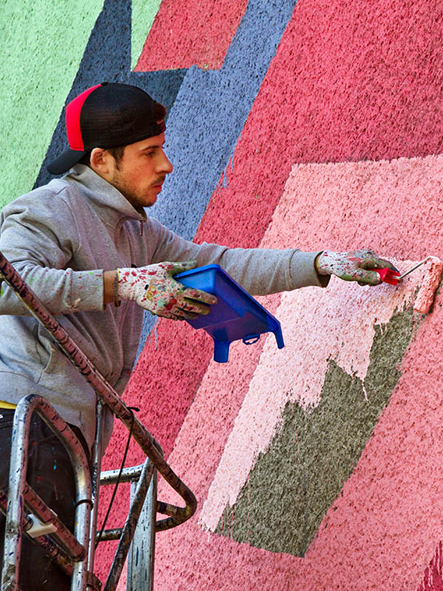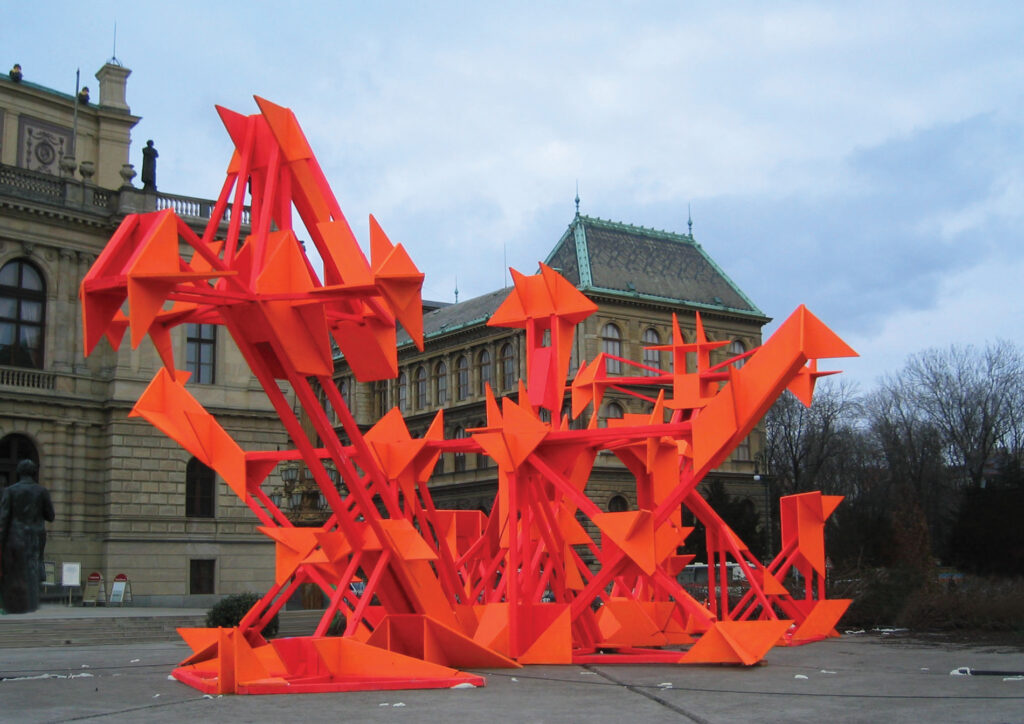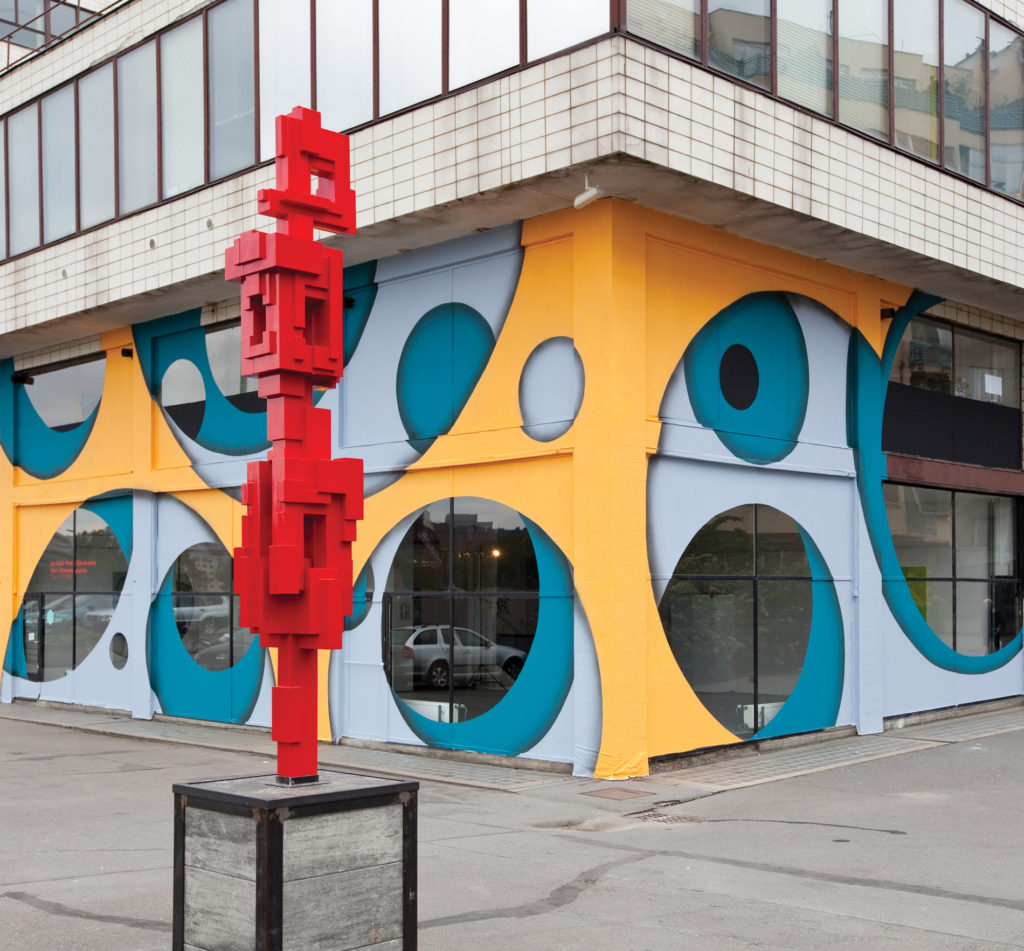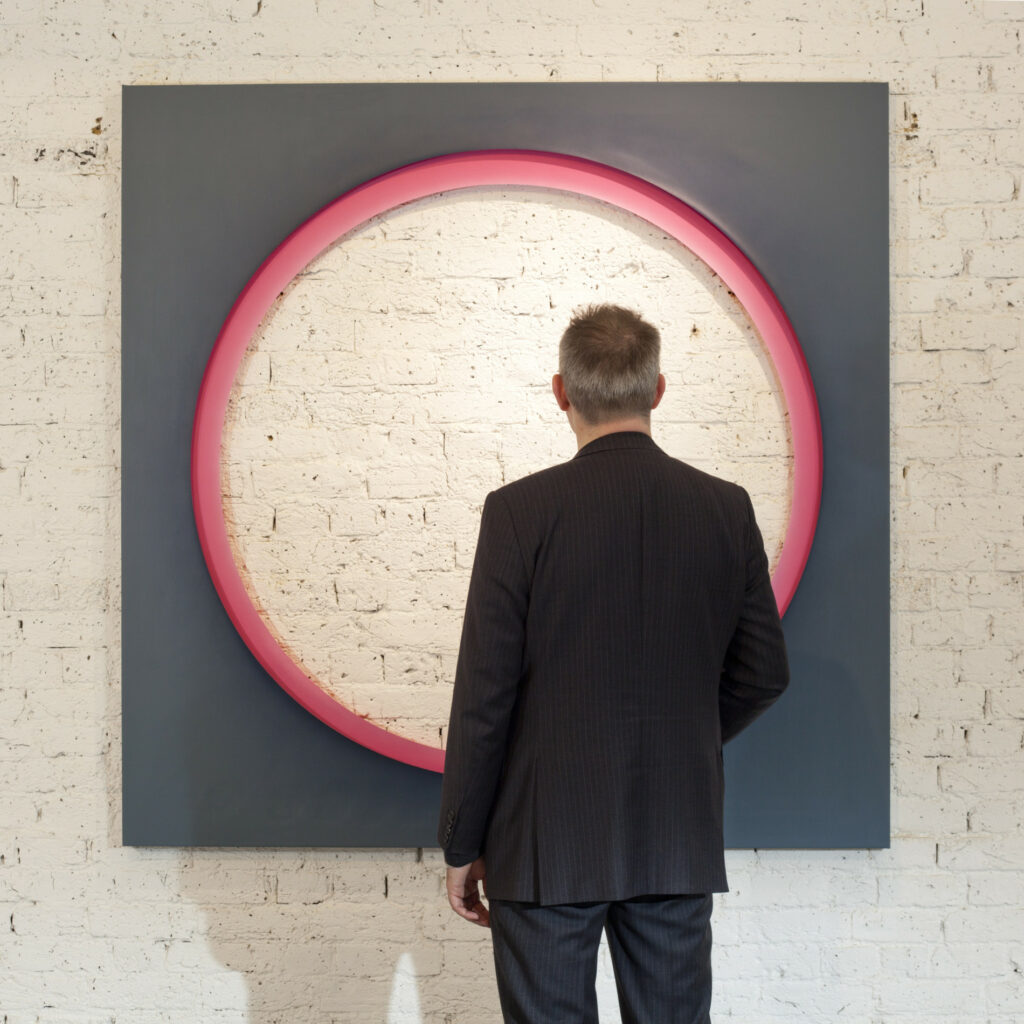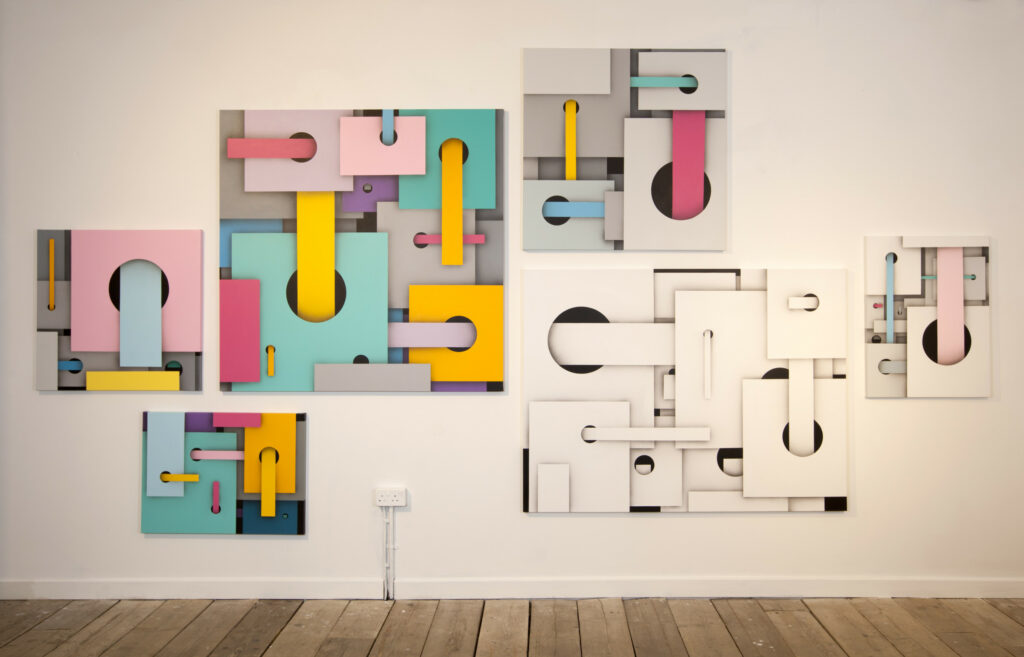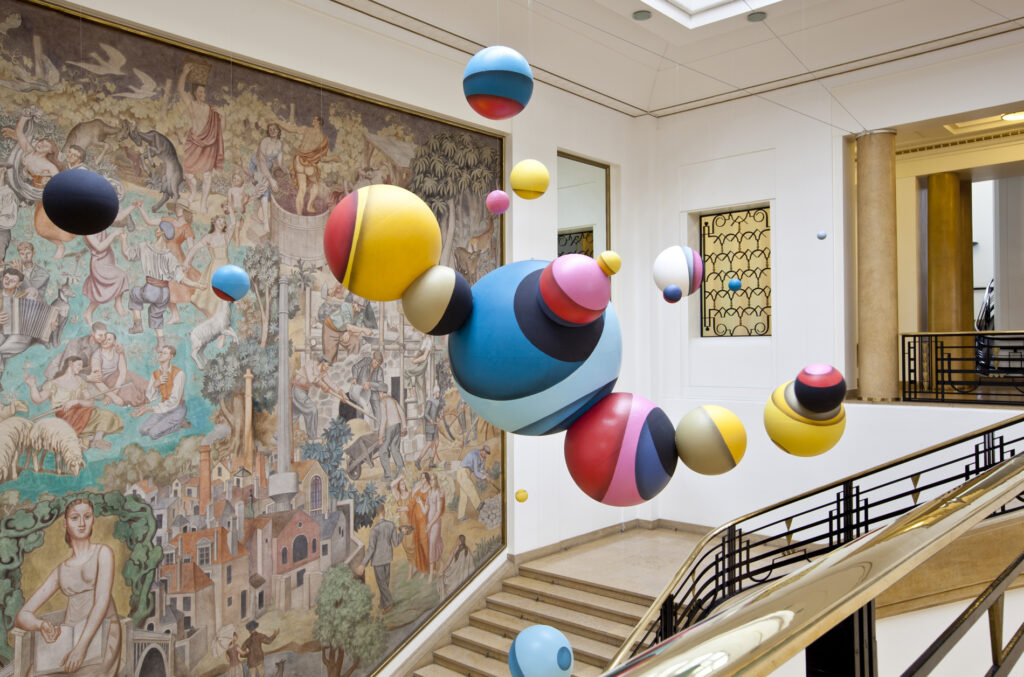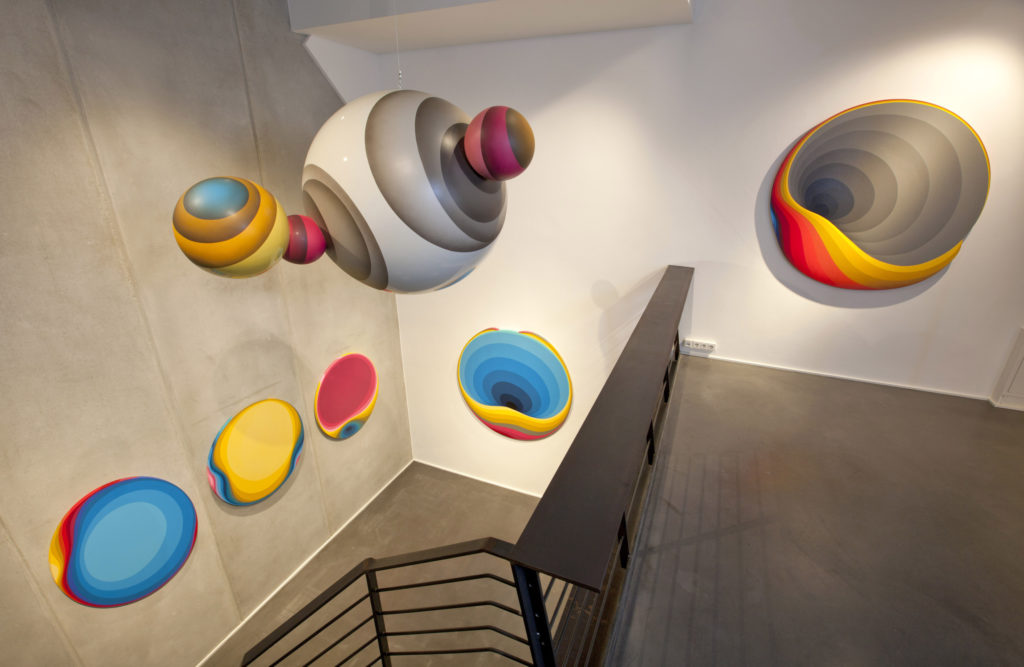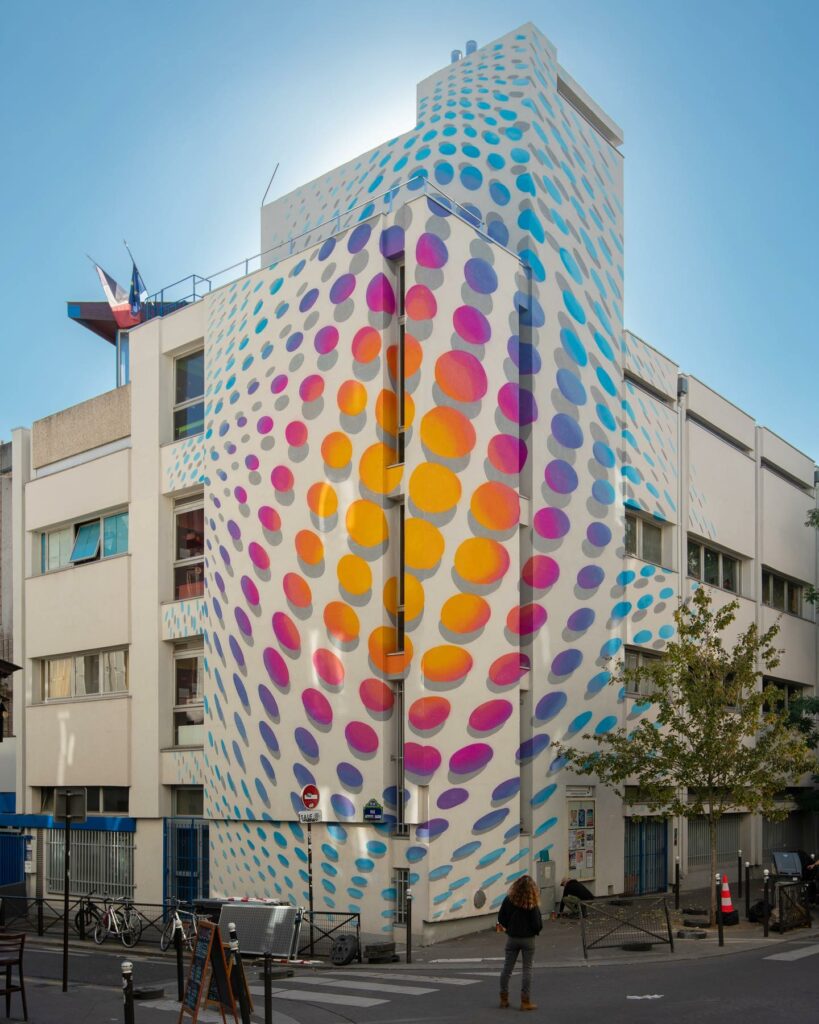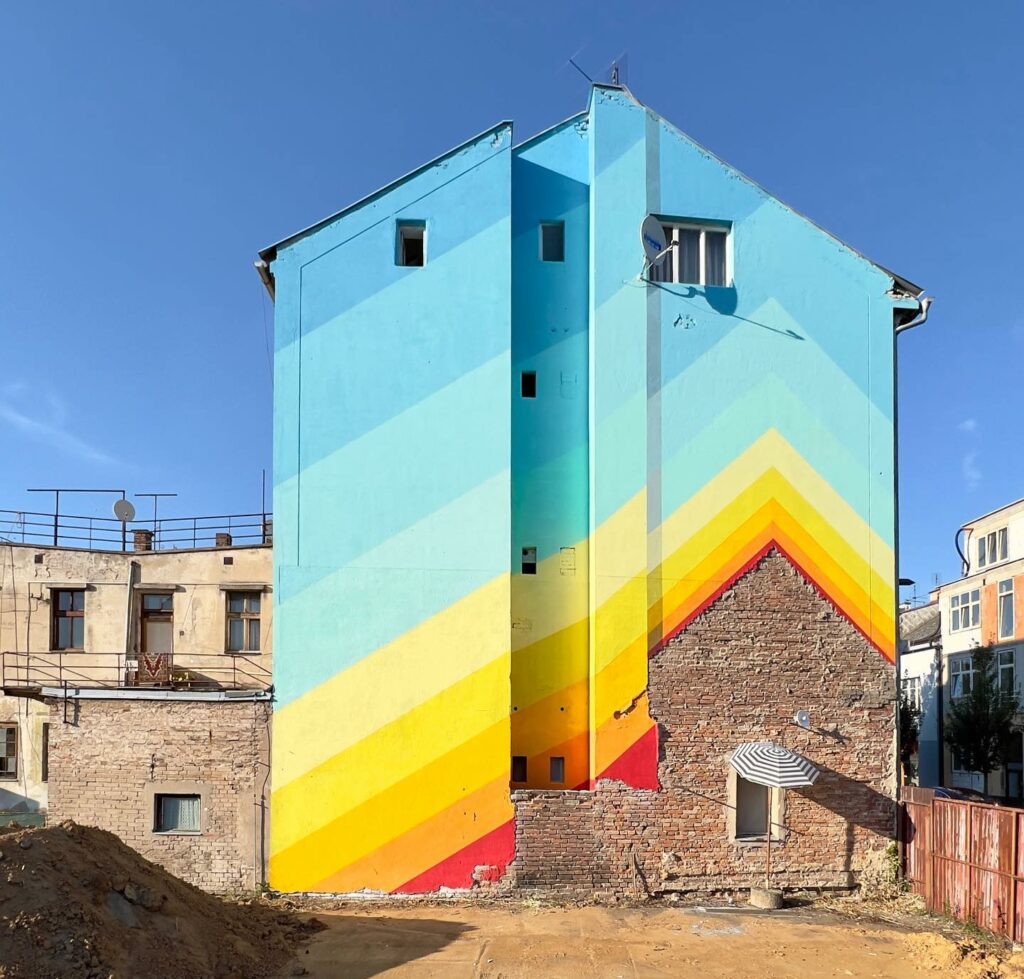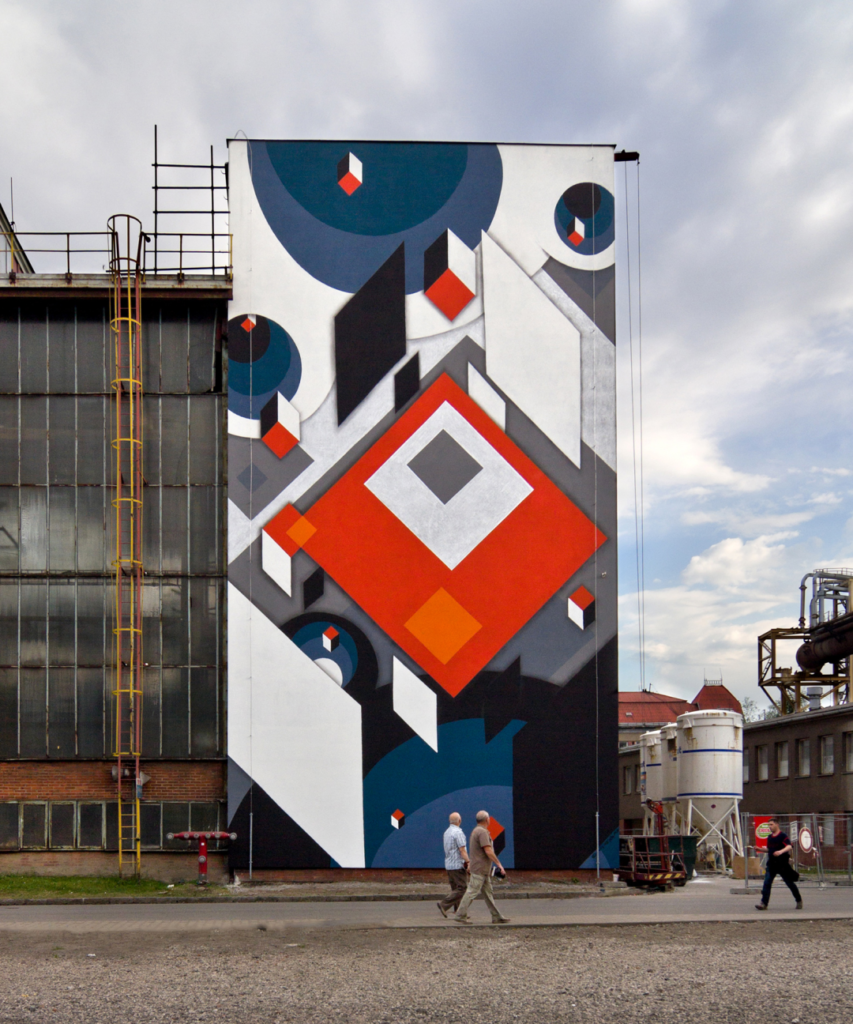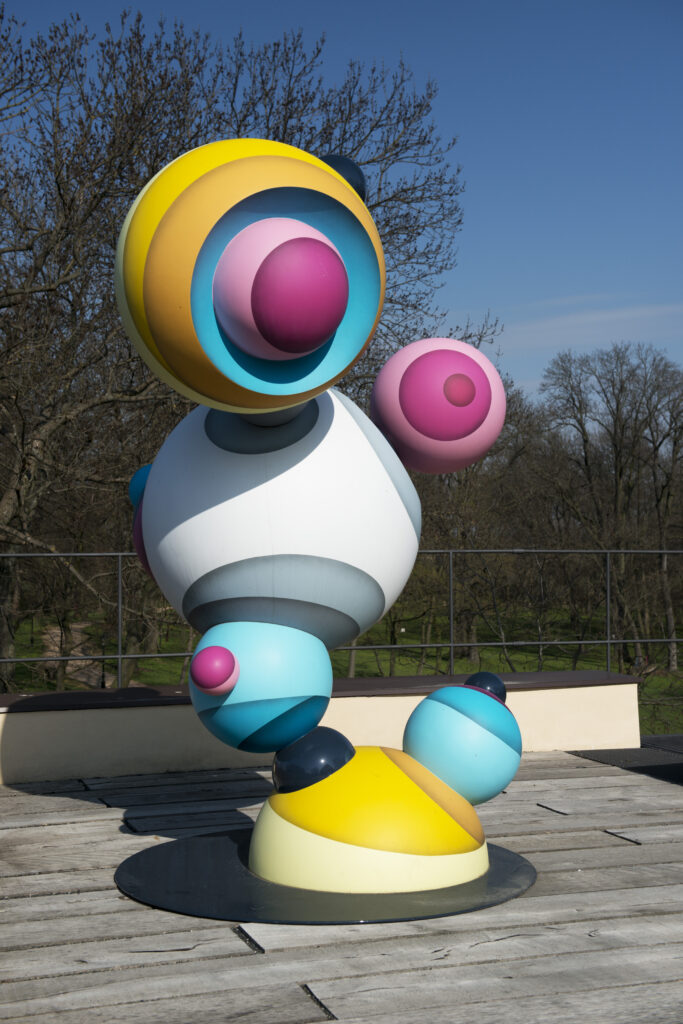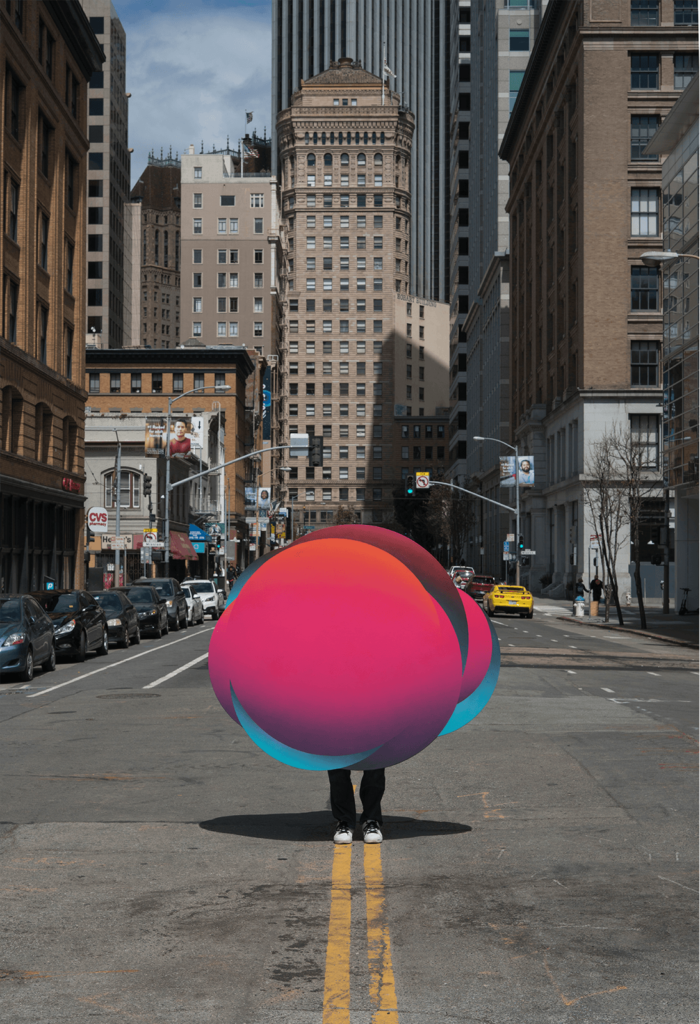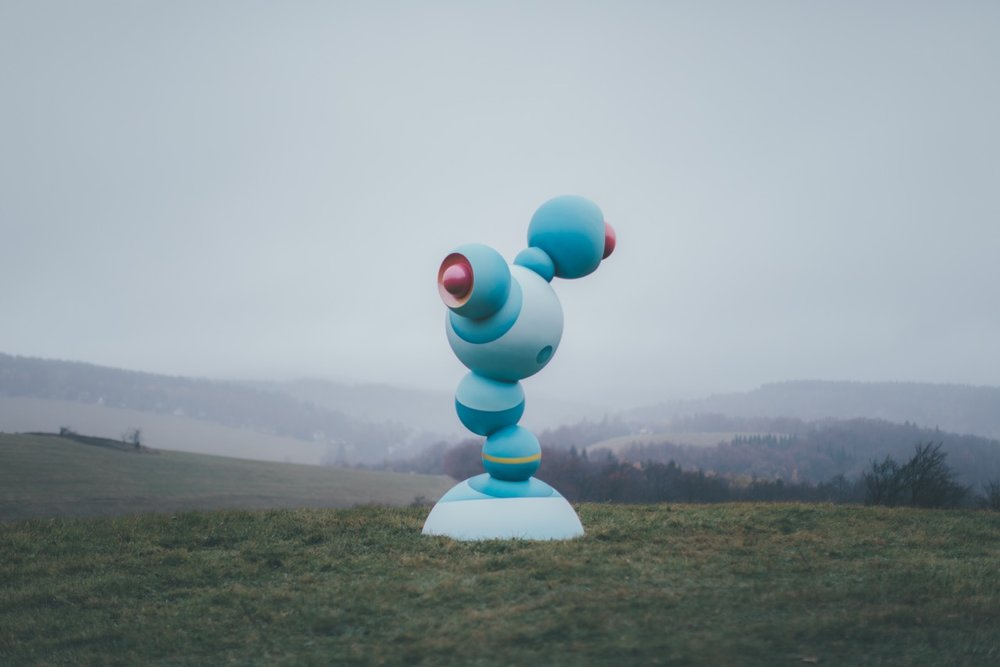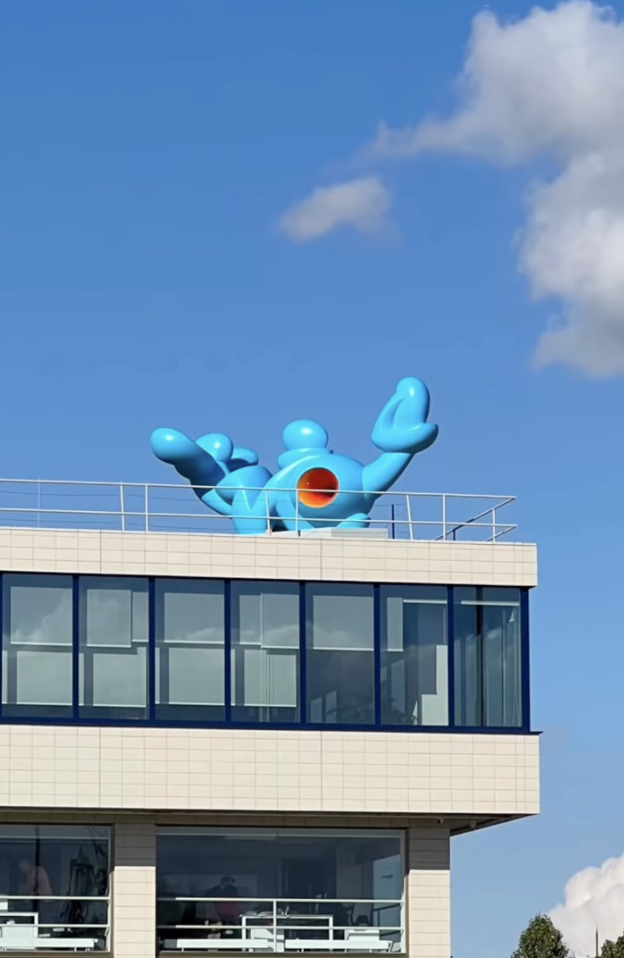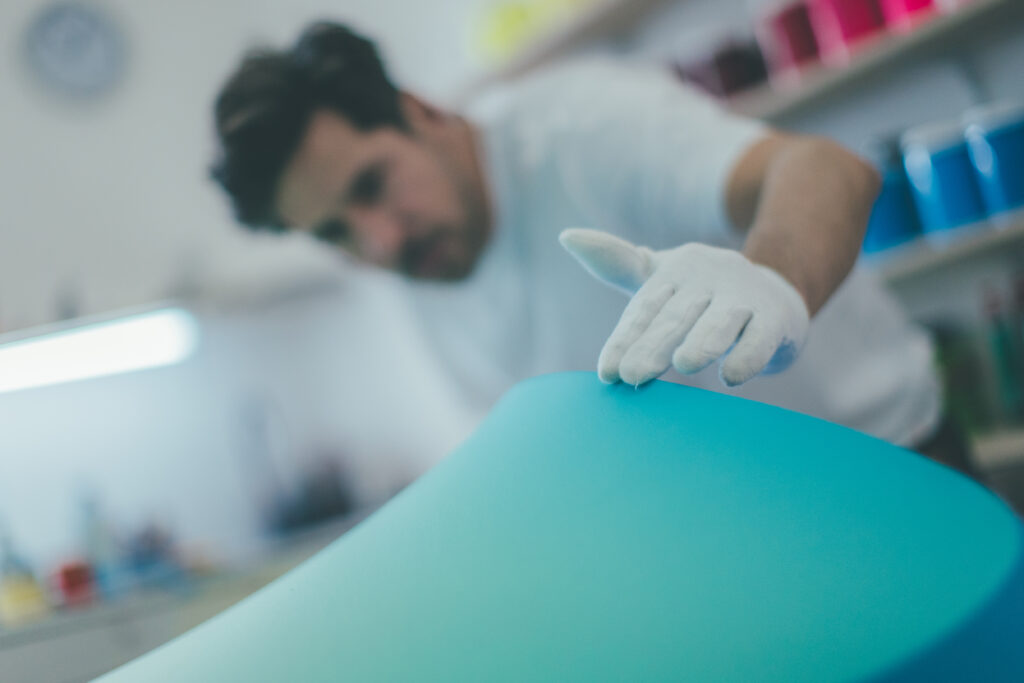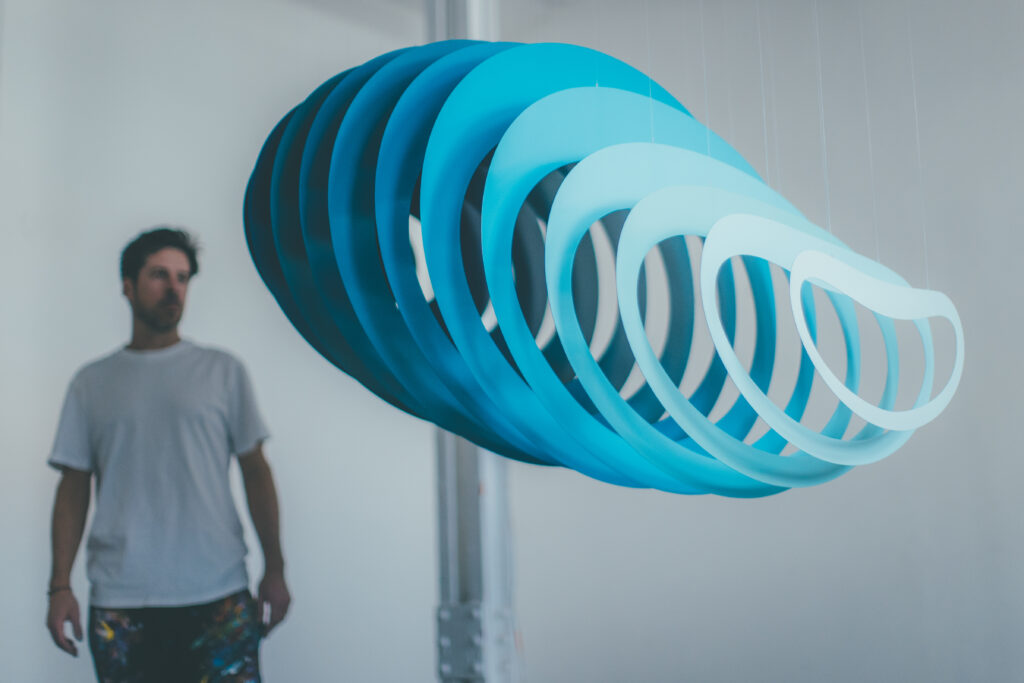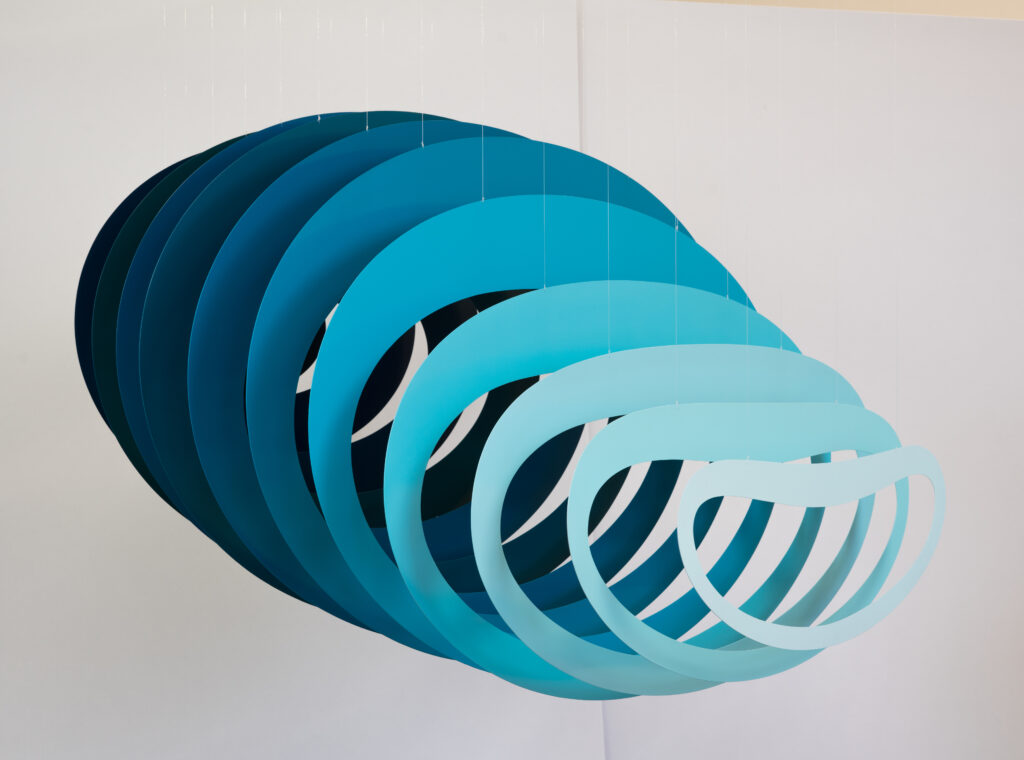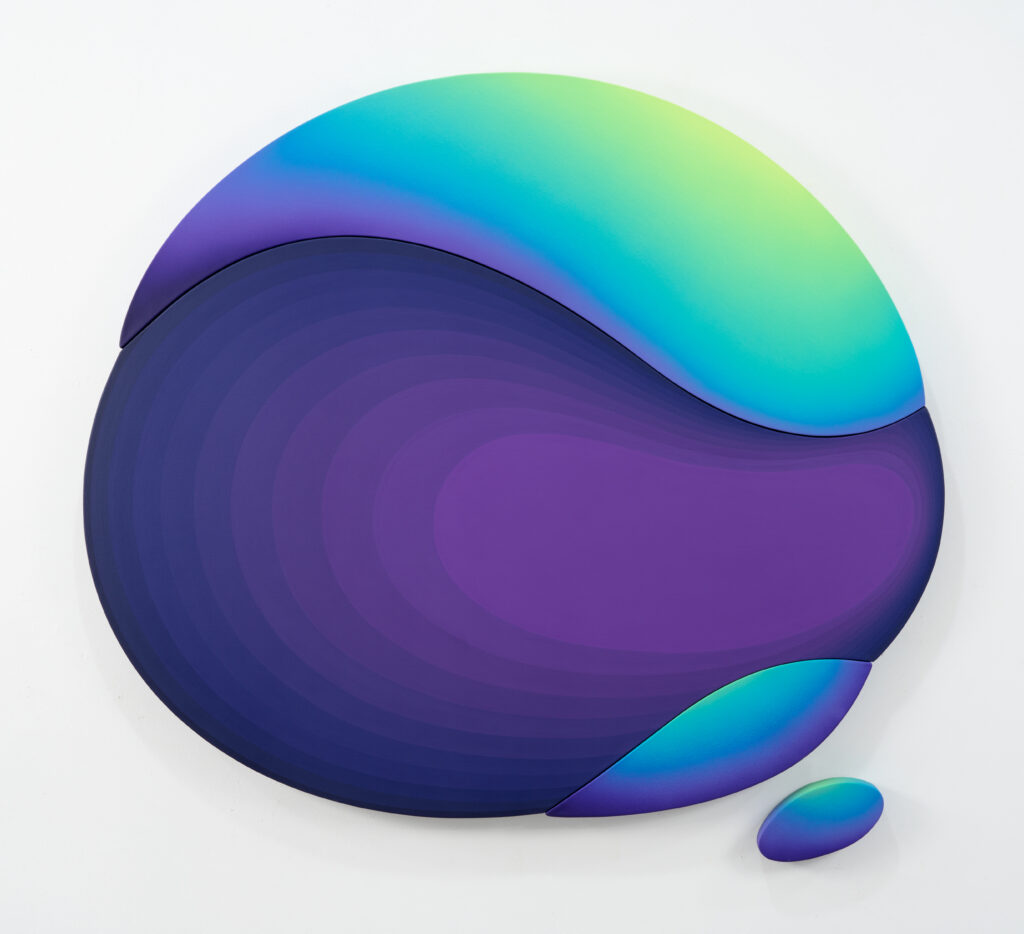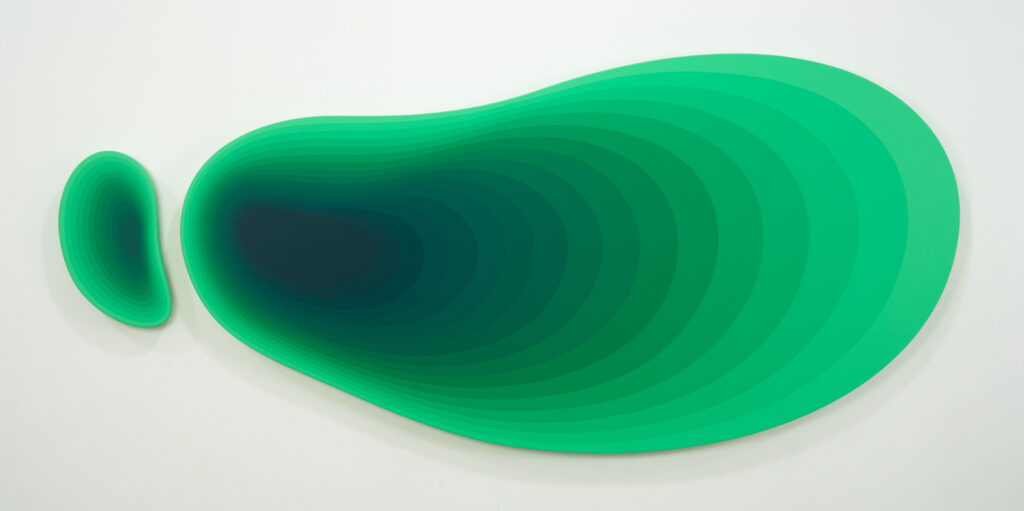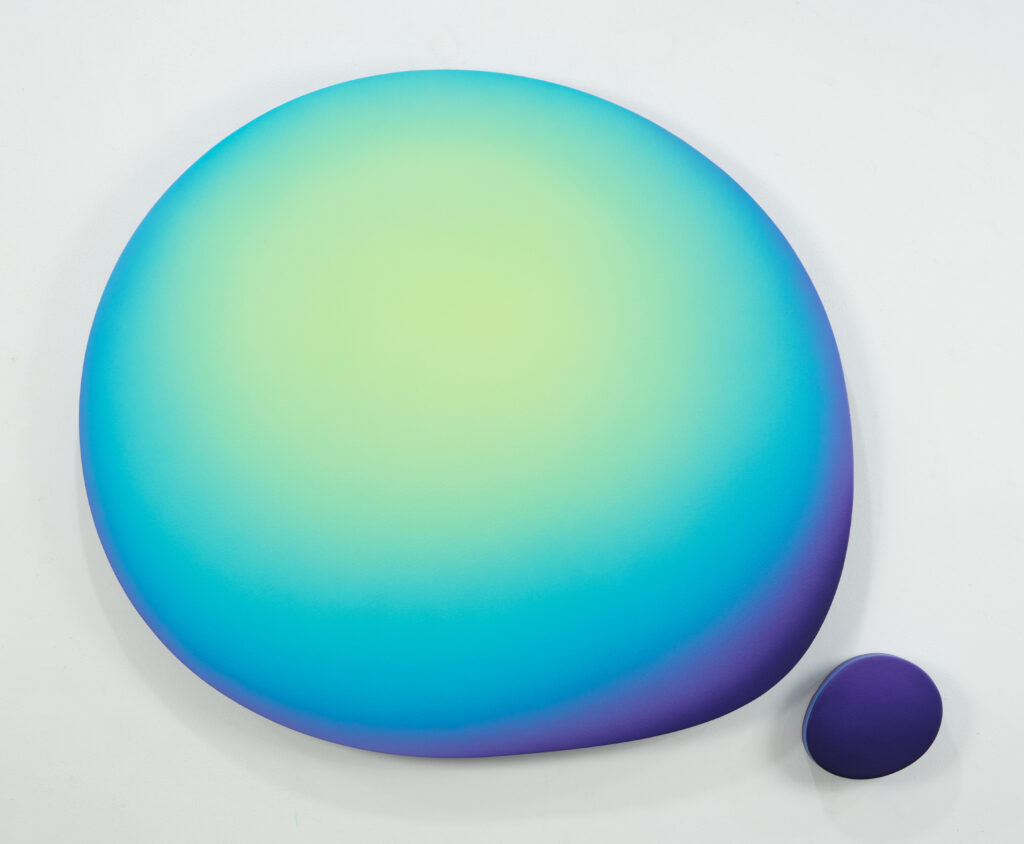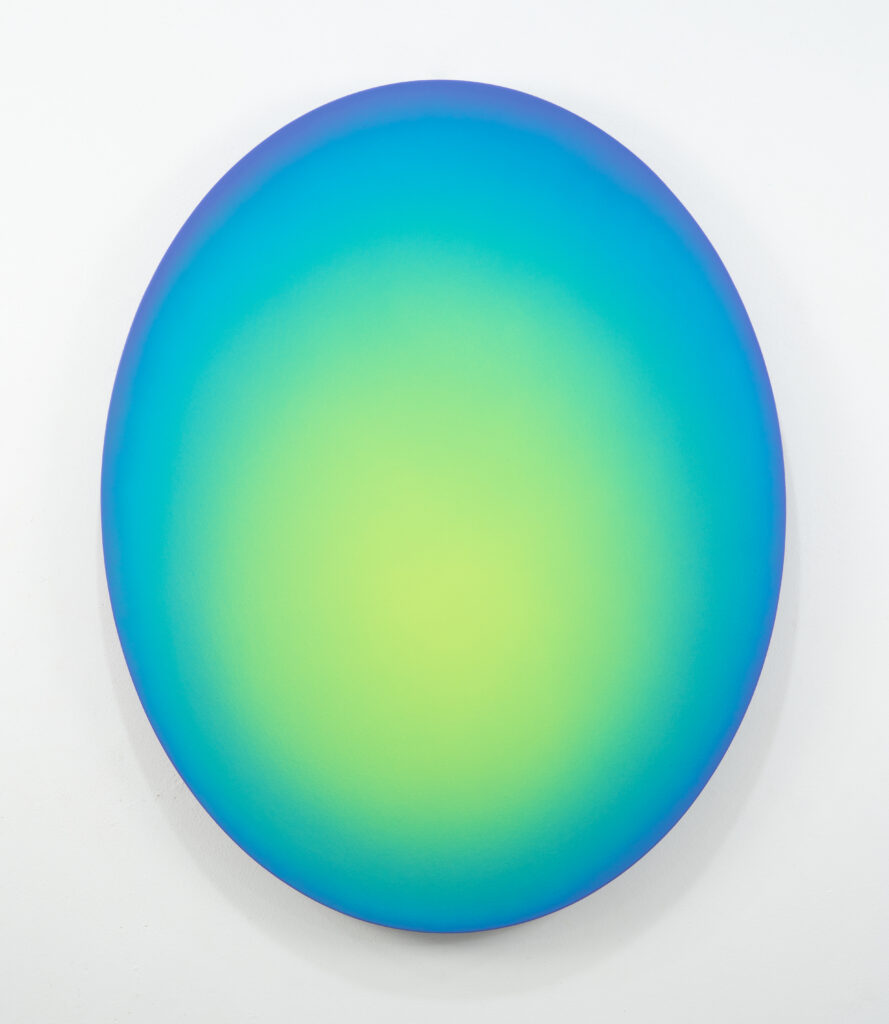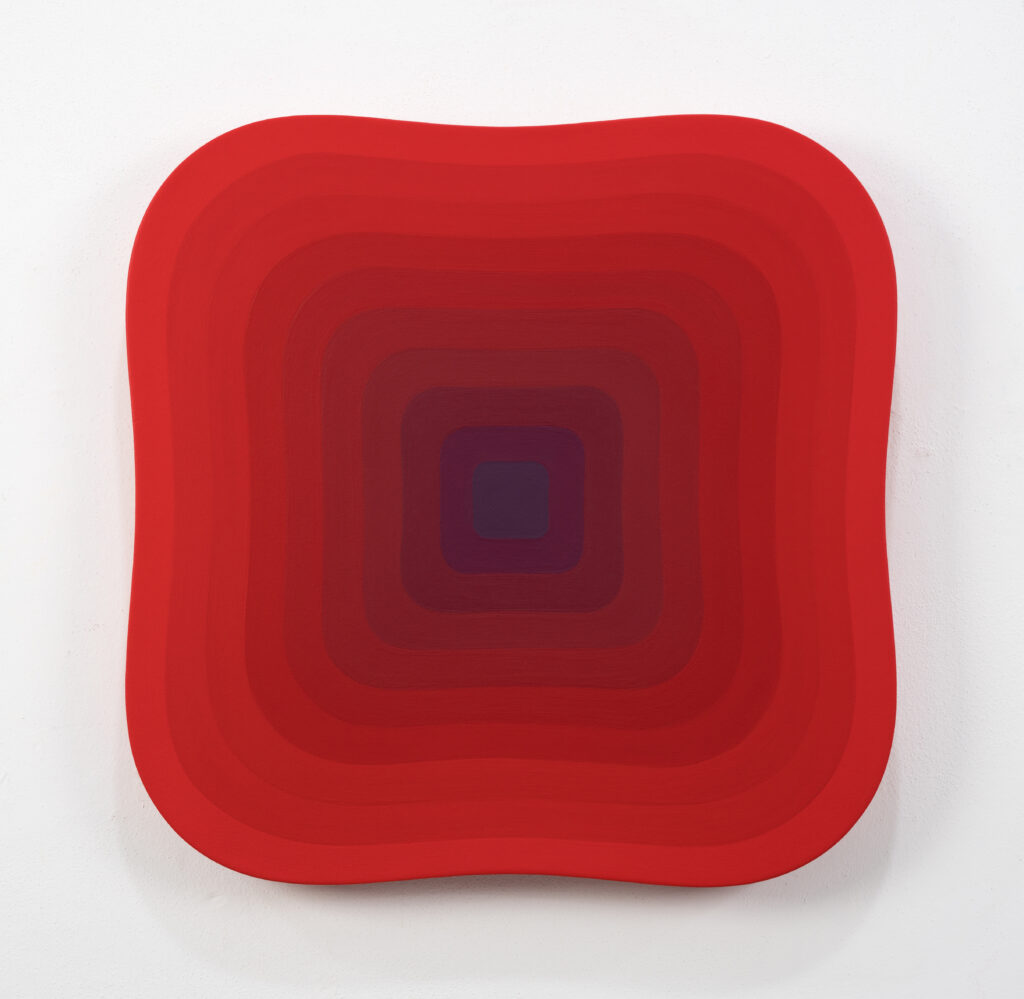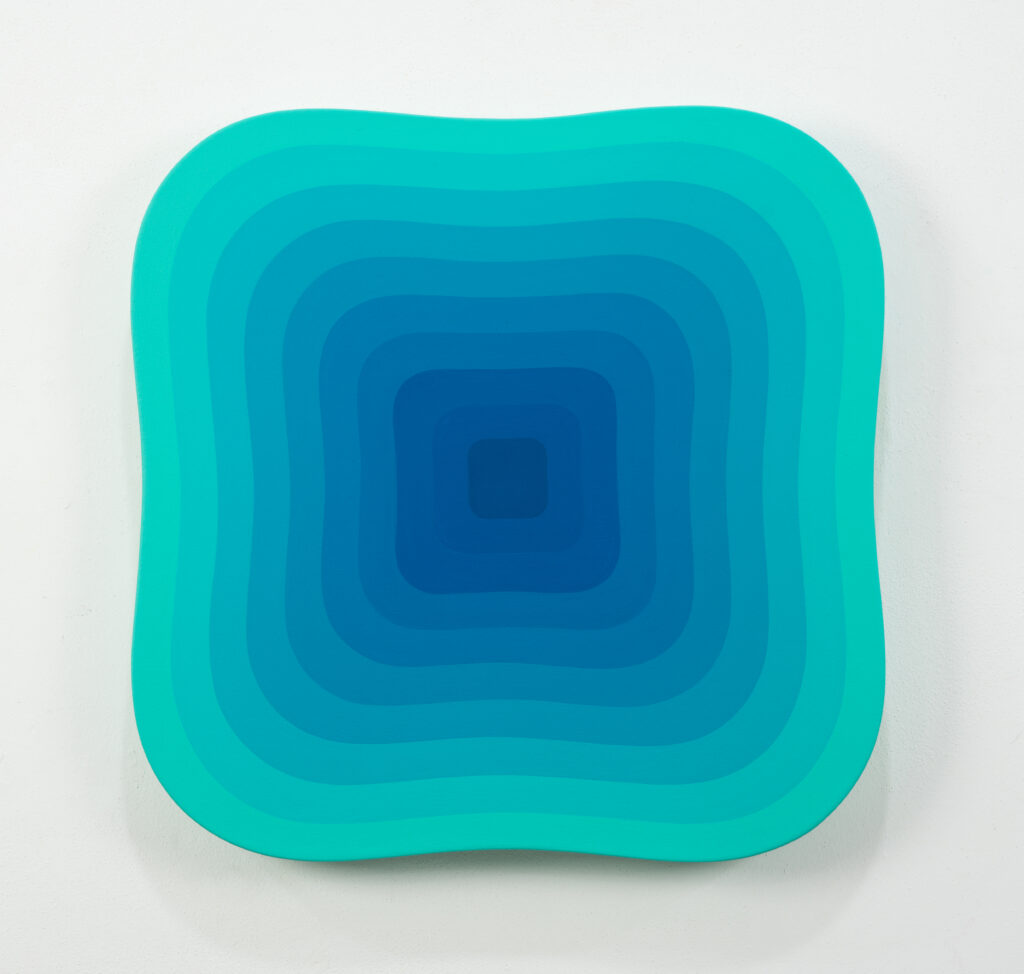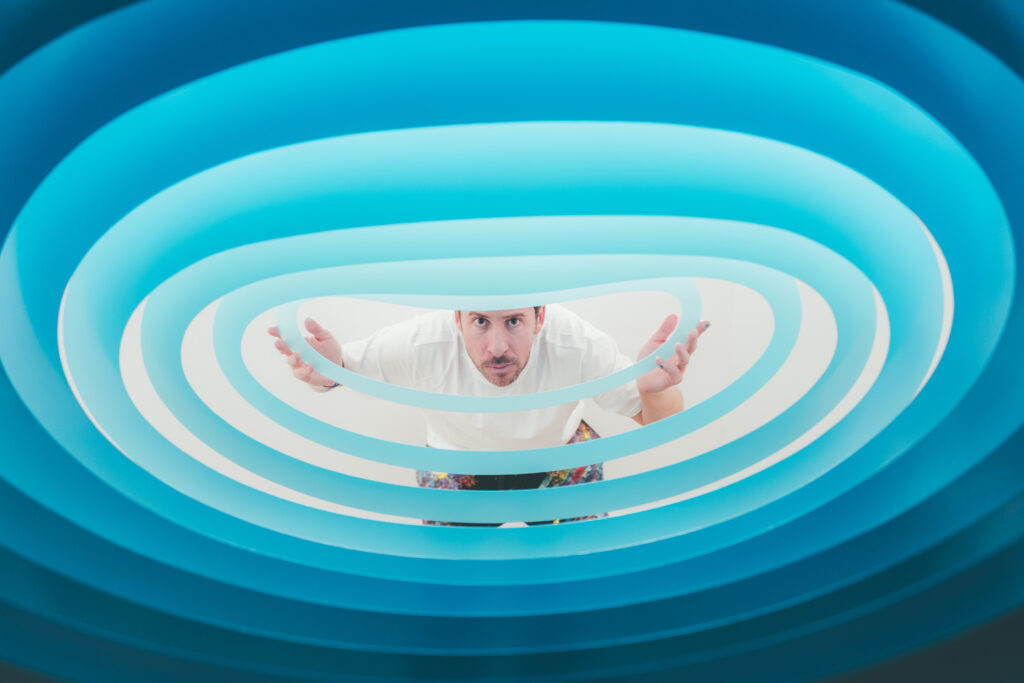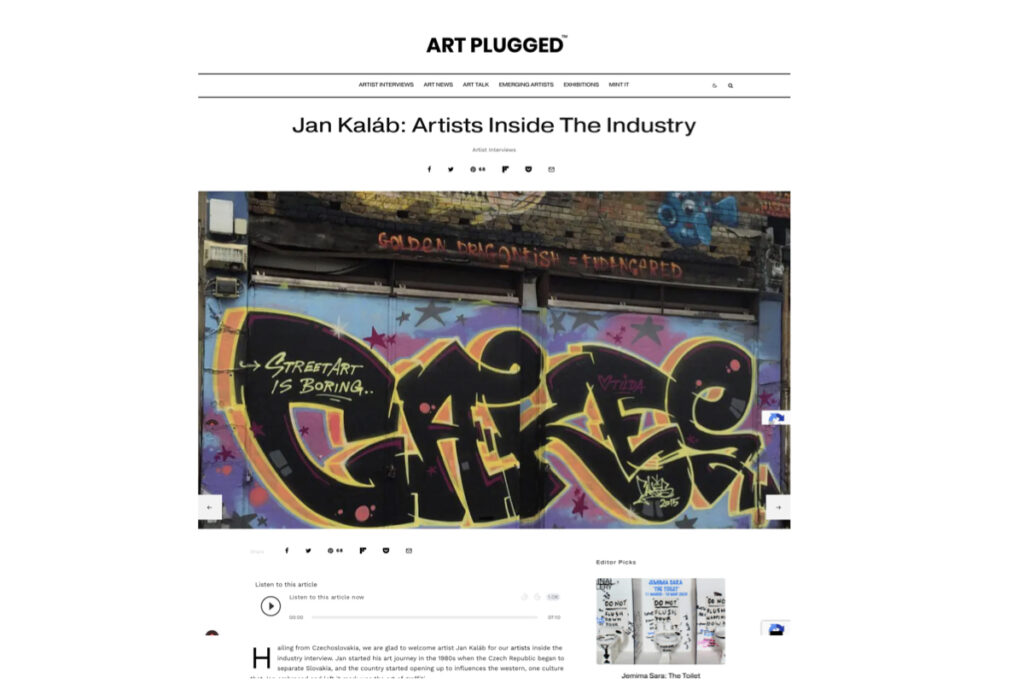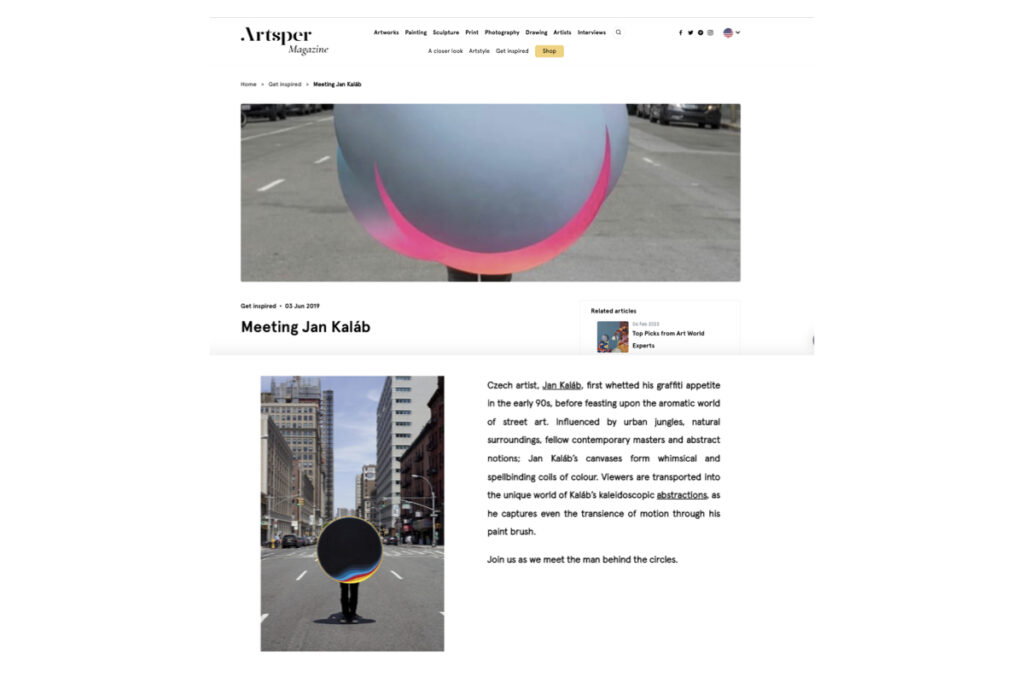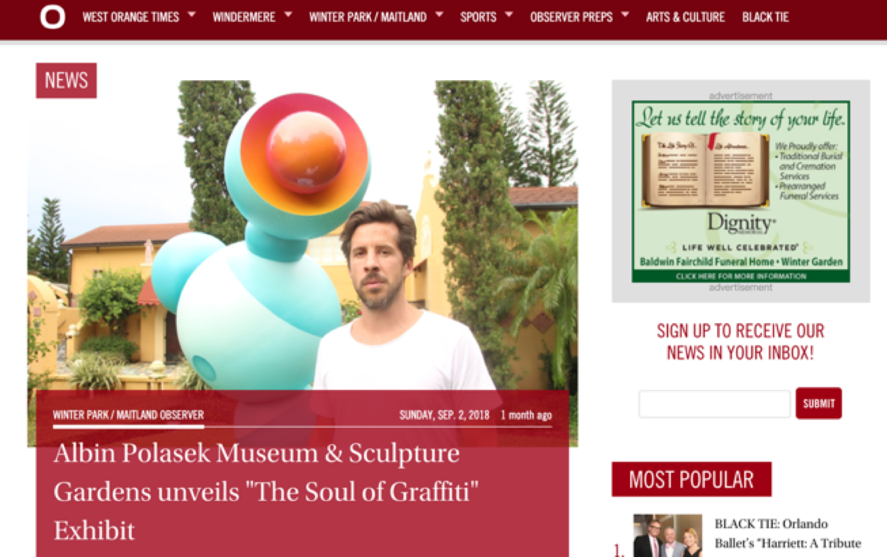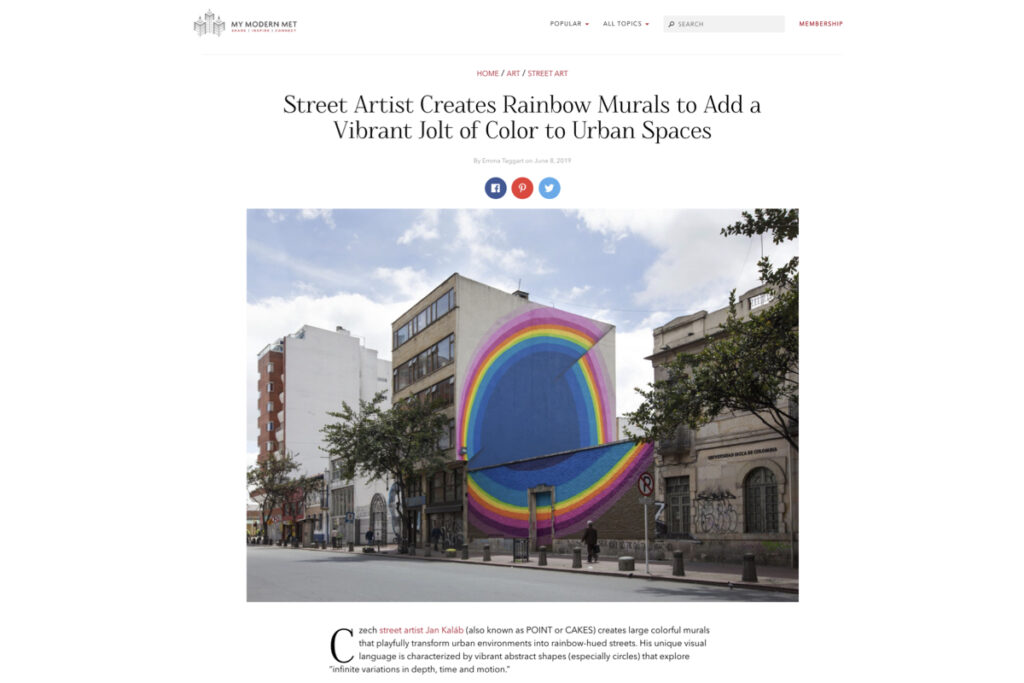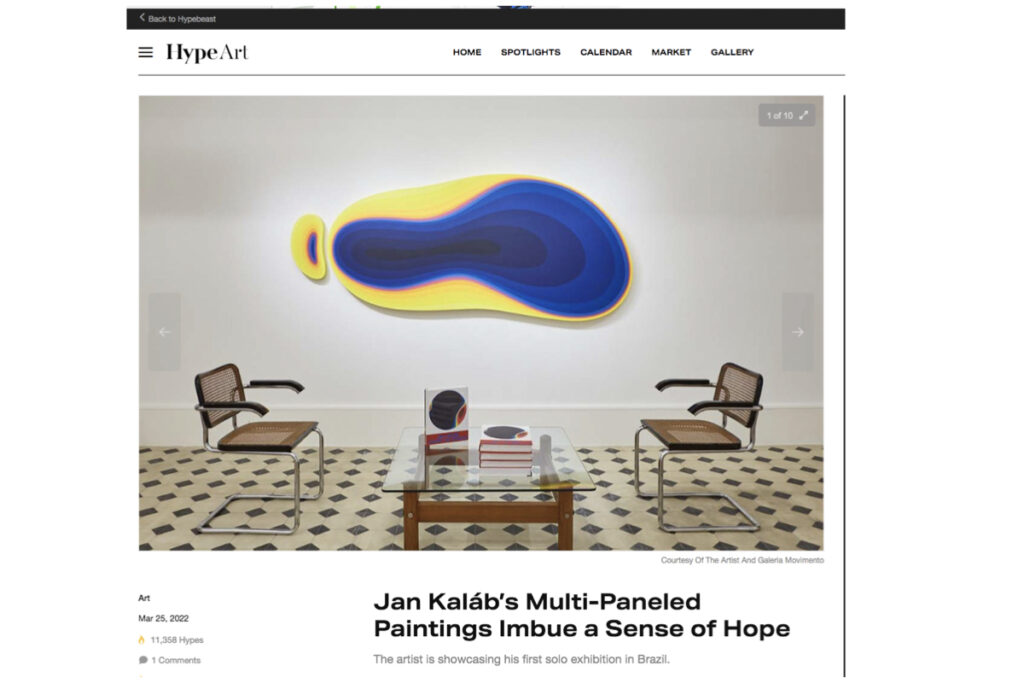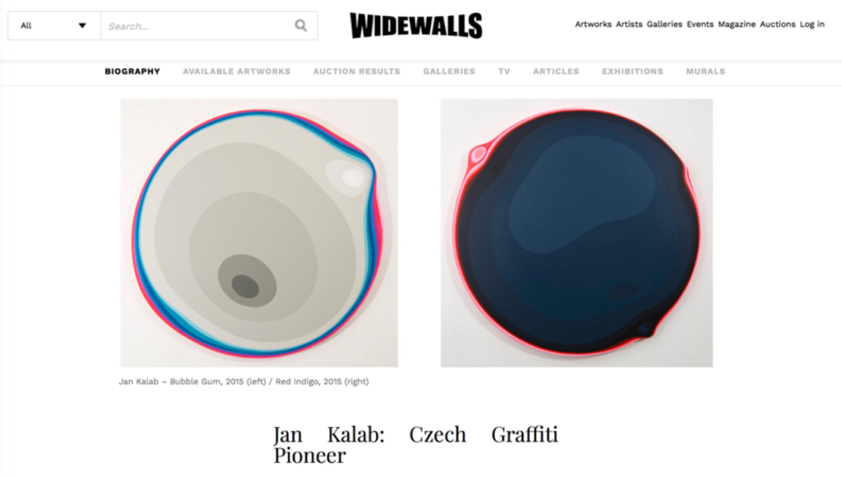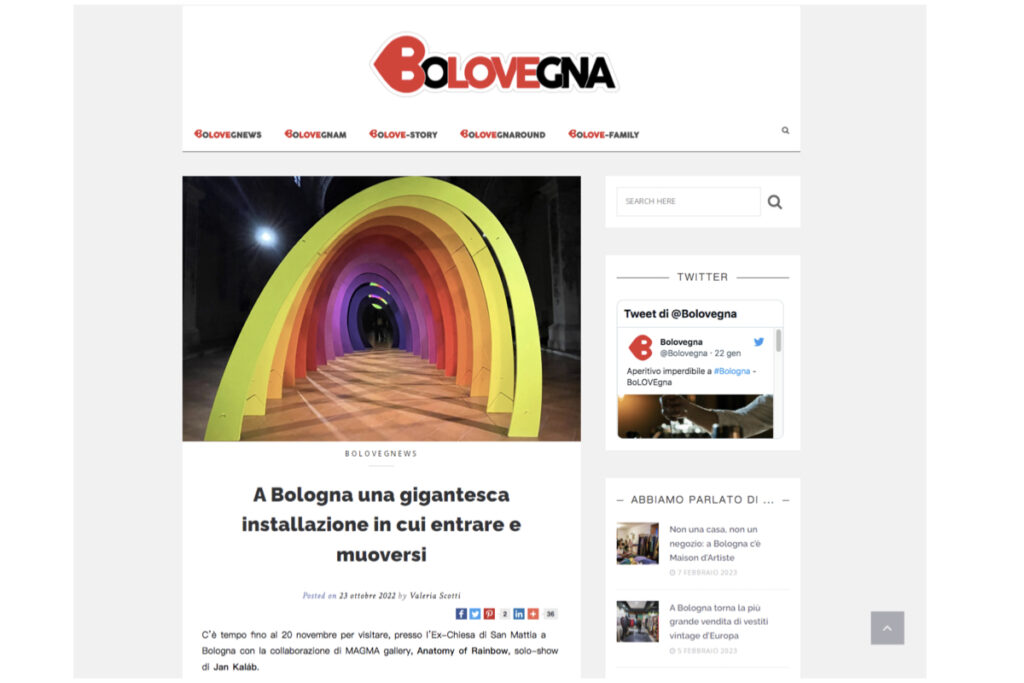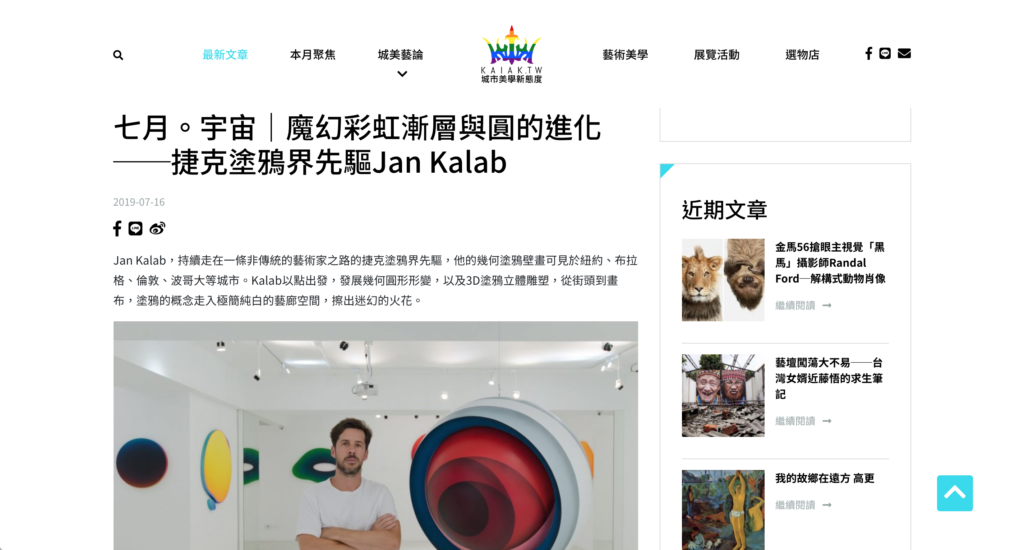看展览 Exhibition
预告片 Trailer
藝術家座談
藝術家外牆作畫
展场視頻
展场照片
媒体日照片
开幕日照片
藝術家對談照片
蓝色地平线上 Blue Horizon
- 杨・克拉Jan Kaláb 2023全新系列个展
2023.03.11 – 2023.05.28
杨・克拉Jan Kaláb(捷克,b. 1978)毕业于捷克布拉格艺术学院(Academy of Fine Arts in Prague),现居住创作于布拉格。捷克涂鸦先驱的杨・克拉Jan Kaláb 30年创作,持续走在一条非传统艺术家之路,从街头涂鸦走入纯白空间,以点出发,发展出圆的形变及3D立体雕塑,将户外狂放浓缩在几何形变画布上。2023 「蓝色地平线上 Blue Horizon」个展,再次突破转为纯粹沉静。做为杨・克拉Jan Kaláb亚洲首间发掘代理画廊,Bluerider ART于2018年举办其「圆的进化 Concentration」亚洲首个展,并陆续推广至其它城市,热度扩大受到广大亚、欧藏家收藏。曾代表捷克在上海世界博览会捷克馆展出,作品收藏于捷克和斯洛伐克国家博物馆、巴西国家艺术博物馆、中国德基美术馆、韩国乌山美术馆,更获DIOR、Tiffany等国际精品及众多私人收藏。
EXPO Pavilion of Czech Republic Shanghai, China 上海世博捷克馆
DE DENTRO E DE FORAMuseu de Arte de São PauloSão Paulo, Brazil 巴西圣保罗艺术博物馆
Albin Polasek Museum, USA
Ex Chiesa Di San Mattia, Bologna, IT 圣马蒂亚斯教堂
Concentration 圆的进化 ,Bluerider ART 个展
展名「蓝色地平线上 Blue Horizon」,那海天交界最初与最后的一线「曙暮光」,在蓝色渐变的地平线上,抒发著艺术家专注创作的当下,时间缓缓流动,逐渐成为一种东方式禅学的内在宁静。从街头涂鸦,到蓝色地平线的30年艺术生涯,杨・克拉Jan Kaláb说出当下的心境:「我真正想成就的艺术是把複杂的内容以一个很简单的形式呈现,不是在讲述一个故事,更像是在表达一种情感,或是无意识的唤醒一些记忆。」
青少年时期即以街头涂鸦创作者 Cakes 、Point 闻名的杨.克拉Jan Kaláb,经历过两个不同阶段才发展至画布上,如同艺术家自述,他的风格并非一蹴而成,而是不断经历研究、尝试、创作的迴圈过程。从奔放的街头语言,转化到抽象色彩语彙,他不再只专注在符号及造型变化上,他以圆为起点,透过色彩及有机变形体,不断探讨画面的深度、动态、改变、时间冻结、永恆边界⋯等,每一条成为极限的线、色彩缓缓溢出的边缘,都让视线慢慢地模糊、融合,也使他的作品富有流动的能量感。
回顾 1970-1980 年代的纽约涂鸦艺术(Graffiti)以都市及街头为舞台,视觉上具备强烈的符号、连续图腾或书写文字。1980 年代纽约艺术家 Jean-Michel Basquiat尚-米榭.巴斯奇亚直接将街头艺术表现空降美术馆及艺廊。杨・克拉Jan Kaláb作品则是从街头符号,转化为精緻的抽象语言,更进一步跳脱画布的束缚构建自我,从狂野的街头语彙提纯,浓缩在有机的画布上,表现了抽象画色彩纯粹性、包容性及无限可能。
此次「蓝色地平线上 Blue Horizon」杨・克拉Jan Kaláb 2023全新系列个展,展出作品专为此个展创作。在此新系列作品中,艺术家减少了调色板,专注于让绘画中的动态形状平静下来,画面中的主色表现对色彩最为纯粹的迷恋,经不断的简化与削减后,所有的视觉张力得以在微妙的色调差异中表现,这与杨・克拉Jan Kaláb过去其它系列、充满动态张力非常不同。作品Vibrating Turquoise Square(震动的绿松石方形)作品,基于创造颜色条纹渐变的视觉效果,和通过将剪影后退到深色调中,创造深邃的透视。作品Carbunculus Bulla(拉丁语中的蓝色气泡)是「渐变透视」的 3D 版,有如水母形状的悬浮装置,由 13 个铝製椭圆组成,在每一层改变色调和形状,形成如同水下气泡的空心物体 。Melting Purple Ellipse(融化的紫色椭圆)、Bracing Embrace (支撑的拥抱 )则是两个渐变形状在相互作用中组合在一起,其中一个形状流过另一个,产生互依和谐的平衡。
「蓝色地平线上Blue Horizon」 -杨・克拉Jan Kaláb 2023全新系列个展
VIP Opening 开幕式 (藏家预览)
3.11 Sat. 2:30pm – 5pm
Open to public大众开放
3.11 Sat. 5pm – 7pm
展期:2023.3.11 – 2023.5.28
地點:Bluerider ART 台北.敦仁Tue.-Sun., 10am – 7pm
台北市大安区大安路一段 101 巷 10 号 1F
免费参观
作品 Works
艺术家 Artist
Jan Kaláb 楊・克拉
(Czech Republic, b. 1978)
杨・克拉Jan Kaláb(捷克,b. 1978)毕业于捷克布拉格艺术学院(Academy of Fine Arts in Prague),现居住创作于布拉格。捷克涂鸦先驱的杨・克拉Jan Kaláb 30年创作,持续走在一条非传统艺术家之路,从街头涂鸦走入纯白空间,以点出发,发展出圆的形变及3D立体雕塑,将户外狂放浓缩在几何形变画布上。曾代表捷克在上海世界博览会捷克馆展出,作品收藏于捷克和斯洛伐克国家博物馆、巴西国家艺术博物馆、中国德基美术馆、韩国乌山美术馆,更获DIOR、Tiffany等国际精品及众多私人收藏。
EXPO Pavilion of Czech Republic Shanghai, China 上海世博捷克馆
DE DENTRO E DE FORAMuseu de Arte de São PauloSão Paulo, Brazil 巴西圣保罗艺术博物馆
Albin Polasek Museum, USA
Ex Chiesa Di San Mattia, Bologna, IT 圣马蒂亚斯教堂
Concentration 圆的进化 ,Bluerider ART 个展
青少年时期即以街头涂鸦创作者 Cakes 、Point 闻名的杨.克拉Jan Kaláb,经历过两个不同阶段才发展至画布上,如同艺术家自述,他的风格并非一蹴而成,而是不断经历研究、尝试、创作的迴圈过程。从奔放的街头语言,转化到抽象色彩语彙,他不再只专注在符号及造型变化上,他以圆为起点,透过色彩及有机变形体,不断探讨画面的深度、动态、改变、时间冻结、永恆边界⋯等,每一条成为极限的线、色彩缓缓溢出的边缘,都让视线慢慢地模糊、融合,也使他的作品富有流动的能量感。
回顾 1970-1980 年代的纽约涂鸦艺术(Graffiti)以都市及街头为舞台,视觉上具备强烈的符号、连续图腾或书写文字。1980 年代纽约艺术家 Jean-Michel Basquiat尚-米榭.巴斯奇亚直接将街头艺术表现空降美术馆及艺廊。杨・克拉Jan Kaláb作品则是从街头符号,转化为精緻的抽象语言,更进一步跳脱画布的束缚构建自我,从狂野的街头语彙提纯,浓缩在有机的画布上,表现了抽象画色彩纯粹性、包容性及无限可能。
此次「蓝色地平线上 Blue Horizon」杨・克拉Jan Kaláb 2023全新系列个展,展出作品专为此个展创作。在此新系列作品中,艺术家减少了调色板,专注于让绘画中的动态形状平静下来,画面中的主色表现对色彩最为纯粹的迷恋,经不断的简化与削减后,所有的视觉张力得以在微妙的色调差异中表现,这与杨・克拉Jan Kaláb过去其它系列、充满动态张力非常不同。作品Vibrating Turquoise Square(震动的绿松石方形)作品,基于创造颜色条纹渐变的视觉效果,和通过将剪影后退到深色调中,创造深邃的透视。作品Carbunculus Bulla(拉丁语中的蓝色气泡)是「渐变透视」的 3D 版,有如水母形状的悬浮装置,由 13 个铝製椭圆组成,在每一层改变色调和形状,形成如同水下气泡的空心物体 。Melting Purple Ellipse(融化的紫色椭圆)、Bracing Embrace (支撑的拥抱 )则是两个渐变形状在相互作用中组合在一起,其中一个形状流过另一个,产生互依和谐的平衡。
媒体报导 Press
Jan Kaláb
(Czech Republic, b.1978)
Solo Exhibitions
2023 Blue Horizon, Bluerider ART, Taipei, TW
2022-2023 Mirage, Castanier Gallery, Miami, USA
2022 Anatomy of Rainbow, Ex Chiesa Di San Mattia, Bologna, IT2022 Shape Of Mind, HOFA Gallery, Mykonos, GR
2022 Calor, Galeria Movimento, Rio De Janeiro, BR2021 Harmony & Soul, Danysz gallery, Shanghai, CHN
2021 Symmetry & Soul, Castanier gallery, Miami, USA
2021 Kód Geometrie, Villa Pelle, Praha, CZ
2021 Cosmic Spring, Macadam Gallery, Brussels, BE
2021 On Vision and Colors, Danysz Gallery, Paris, FR
2020 Melted Sun, Kreisler Gallery ,Madrid,SP
2020 Stripped, BC Gallery, Basel, CH
2020 Solar, Rhodes Contemporary gallery, London, UK
2019 Atomic Bubble, MAGMA gallery, Bologna, IT
2019 Bent Horizons, Plastic Murs gallery, Valencia, SP
2019 Concentration, Bluerider ART gallery, Taipei, TW
2019 Shape & Tone, Castanier Gallery, Miami, USA
2018 Point of Space, Trafo gallery, Prague, Czech Republic
2018 The Soul of Graffiti, Albin Polasek Museum, Winter Park, Florida, USA
2018 Perspective of Clouds, Mirus Gallery, San Francisco, USA
2017 ZOOOM, Magma Gallery, Bologna, Italy
2016 Pluriforme, Openspace Gallery, Paris, France
2016 Pulso Cromático, Castanier Gallery, Bogota, Colombia
2015 TENSION, BC Gallery, Berlin, Germany
2015 ODYSSEY, Lollipop Gallery, London, UK
2015 EXTRA, Villa Pellé, Prague, Czech Republic
2015 Getting Up, Partisan Creative Corner, Soest, Germany
2014 ART IN PUBLIC, Pop up exhibition, Šmeralova 6, Prague, Czech Republic
2014 ART IN PUBLIC, Pop up exhibition, 103 Allen Street, New York, USA
2014 AROUND THE POINT, HIC Gallery, Buenos Aires, Argentina
2013 SALUT, H’art Gallery, Bucharest, Romania
2013 FROM POINT TO CIRCLE AND BACK, Oko Gallery, Opava, Czech Republic
2013 POINT / ALTERNATE PLAN(E)S, the Chemistry Gallery, Prague, Czech Republic
2012 GOOD CHOICE, Czech Centre, Sofia, Bulgaria
2011 KALÁB 33 / PLANETS CROSSING, Trafačka, Prague, Czech Republic
2008 POINT SHOP, Trafo Gallery, Prague, Czech Republic
Selected Group Exhibitions
2023 Dias Melhores, VERAO, Movimento Gallery, Rio e Janeiro, BR
2022 Vibrations, Danysz gallery, Shanghai, CN
2022 Ripple Effect, Hashimoto gallery, Los Angeles, USA
2022 Wall Street, Villa Pelle, Praha, CZ
2021 Divertimento, Collegiale Saint-Pierre-Le-Puellier, Orleans, FR
2020 New Rules, Castanier Gallery, Miami, USA
2020 Venit Occursum, Danysz Gallery, Shanghai, CN
2020 Collective Exhibition, Macdam GalleryBrussless,BE
2019 Shapes & Illusions, Danysz Gallery, Paris, FR
2019 Watch This Space, LAZinc gallery, London, UK
2019 Capture the Street, Oberhessisches Museum Giessen, Giessen, DE
2019 Letní salón, Galerie Kodl, Praha, CZ
2019 Get Out While You Can, Maddox Gallery, London
2019 CHROMA: Summer Group Exhibition, Rhodes, London
2019 GEOMETRIC HEAT: Marco Casentini, Jan Kalab, Adam Lucas, Daniel Rich, GR Gallery, New York
2019 Get Out While You Can, Maddox Gallery, Gstaad
2019 “Summer Reflection” Group Show, Fabien Castanier Gallery, Miami
2019 Praha-Berlin Barter, Urban Spree Galerie, Berlin
2018 This Is Now, Wyn317, Miami
2018 A Matter of Form, MAGMA gallery, Bologna
2018 MAGMA presents, MAGMA gallery
2018 Grand Opening Group Exhibition, Mirus Gallery, Denver
2017 Urban Art Biennale, Völklinger Ironworks, Völkliner Germany
2017 PERCEPTUAL VERTIGO, Avantgarden Gallery, Milan, Italy
2017 NO MORE CREW, Urban Spree, Berlin, Germany
2017 ABSTRAKT FORUM, Forum Przestrzenie, Krakow, Poland
2017 AVANTARTE X UNITLONDON, the Unit London Gallery, London, UK
2016 POP-UP EXHIBITION, Fabien Castanier Gallery, Miami, USA
2016 ZMRTVÝCHVSTÁNÍ, Trafo Gallery, Prague, Czech Republic
2016 MIMESIS, MAGMA Gallery, Bologna, Italy
2016 FRIENDS AND FAMILY, Fabien Castanier Gallery, Los Angeles, USA
2016 HZGSJK, Goldenhands Gallery, Hamburg Germany
2016 TRANSBORDER, Fabien Castanier Gallery, Los Angeles, USA
2015 OpenART – art biennale, Orebro, Sweden
2015 Et Cetera, Museo nazionale delle arti del XXI secolo (MAXXI), Rome, Italy
2014 TRAFACKA – CLOSE, Trafacka gallery, Prague, Czech Republic
2014 ARTMOSSPHERE – 1st streetart biennale, Moscow, Russia
2014 OUTSIDE / INSIDE, Tabla Rasa gallery, Brooklyn – New York, USA
2014 TRAFACKA / TEMPLE OF FREEDOM, Red Gallery, London, UK
2014 CHILDREN OF KUPKA, City Hall Putaux, Putaux, France
2013 ET CETERA, Istituto Italiano di Cultura, Prague, Czech Republic
2012 STUCK ON THE CITY, City Gallery Prague, Prague, Czech Republic
2012 STREET SMART, Kulturhuset, Stockholm, Sweden
2012 THREE FROM TRAFACKA, Gallery of Modern Art, Roudnice nad Labem, Czech Republic
2011 DE DENTRO E DE FORA, Museu de Arte de São Paulo, Sao Paulo, Brazil
2011 BOUTIQUE, The Chemistry Gallery, Prague, Czech Republic
2010 1st BIENNAL DE GRAFFITI FINE ART, Museu Brasileiro de Escultura, Sao Paulo, Brazil
2010 METROPOLIS, Pavilion of Czech Republic, EXPO 2010, Shanghai, China
2009 STORAGE, The Chemistry Gallery, Prague, Czech Republic
2009 60 DETAILS project, Moscow, Russia
2009 WE BELIEVE IN CRISIS, Trafo gallery, Prague, Czech Republic
2008 NAMES, Trafacka gallery, Prague, Czech Republic
2008 CITY’S CELEBRITIES, Moravian Gallery, Brno, Czech Republic
2008 FACES AND LACES, Moscow, Russia
2007 5+kk, Trafo gallery, Prague, Czech Republic
2007 PLANET PROZESS, Senatsreservenspeicher, Berlin, Germany
2007 SPACE FOR INTUITION, City Gallery Prague, Prague, Czech Republic
2006 TRAFACKA – OPEN, Trafacka gallery, Prague, Czech Republic
2006 ART BEAT, BG, Amsterdam, the Netherlands
2005 CITY OF NAMES, Kunsthalle Bethanien, Berlin, Germany
2004 OBJECTIVITY, Cathedral Gardens, Manchester, UK
2004 EVERWANTING STREETS, Röda Sten, Göteborg, Sweden
2003 BACK JUMPS (the Live issue), Kunsthalle Bethanien, Berlin, Germany
2003 GENESIS, Ten 15, San Francisco, USA
2003 DA PAINTAZ, NoD Gallery, Prague, Czech Republic
2003 3rd SHOW OF YOUNG ARTISTS, Regional Gallery of Fine Arts, Zlin, Czech Republic
2002 SUBCULTURE, NoD Gallery, Prague, Czech Republic
2002 FRESH MEAT, City Gallery Prague, Prague, Czech Republic
2001 FRAGMENTS 4, Mánes gallery, Prague, Czech Republic
Collection
National Czech & Slovak Museum & Library, Cedar Rapids ,USA
Museu Nacional de Belas Aertes, Rio De Janeiro, Brasil
DEJI Art Museum, Nanjing, China
OsanMuseum, Osan, South Korea
Tiffany & Co
Dior

